Flower is a blossom, or it may be an entire plant that is known for its blossoms. People admire flowers for their beauty. But flowers also have a vital function: they are the means by which most plants reproduce. Flowers usually produce pollen and seeds.
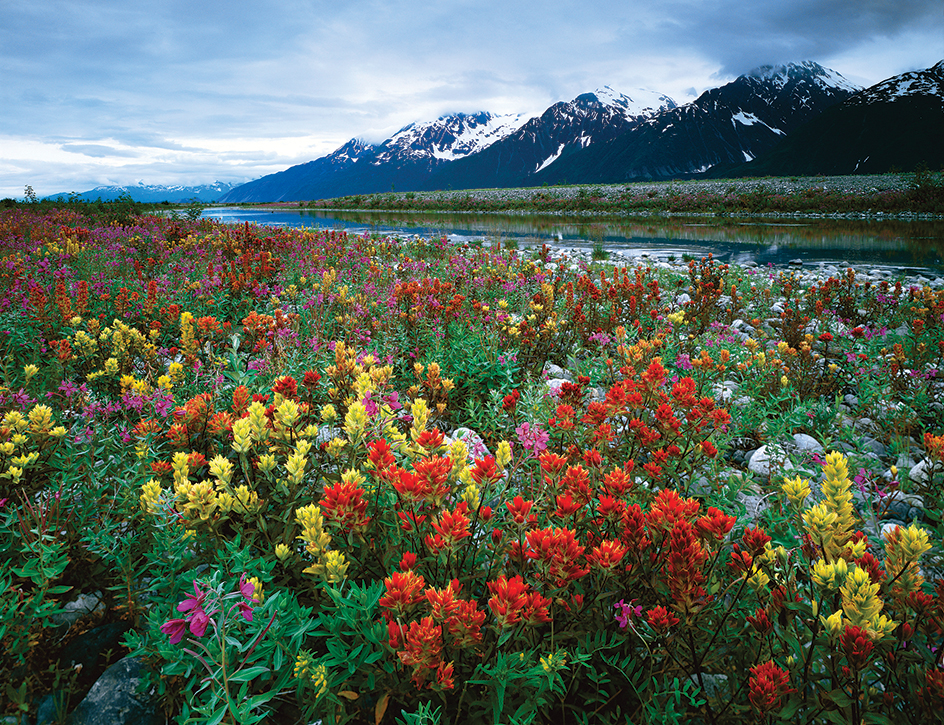
People may think of flowers as being brightly colored and showy. Common examples of such flowers include buttercups, orchids, roses, tulips, violets, and hundreds of other garden flowers and wildflowers. In some plants, such as grasses and oaks, however, the flowers are so small and plain that few people recognize them as flowers. Some trees, such as catalpas and horse chestnuts, have beautiful blossoms. But the trees themselves are never referred to as flowers. All the plants classified as either garden flowers or wildflowers are smaller than trees. Also, most of these flowering plants have soft stems rather than woody stems.
People prize flowers for their gorgeous colors, delightful fragrances, and attractive shapes. Because of their beauty, flowers are a favorite form of decoration. People also use flowers to express their feelings. For more than 50,000 years, people have placed flowers on the graves of loved ones as a sign of remembrance and respect. Flowers at weddings symbolize love, happiness, and fertility (the ability to produce children). Certain flowers also have a religious meaning. Among Christians, for example, the white Easter lily stands for purity. Buddhists and Hindus regard the lotus as sacred, perhaps because its lovely flower rises above the mud in which it grows.
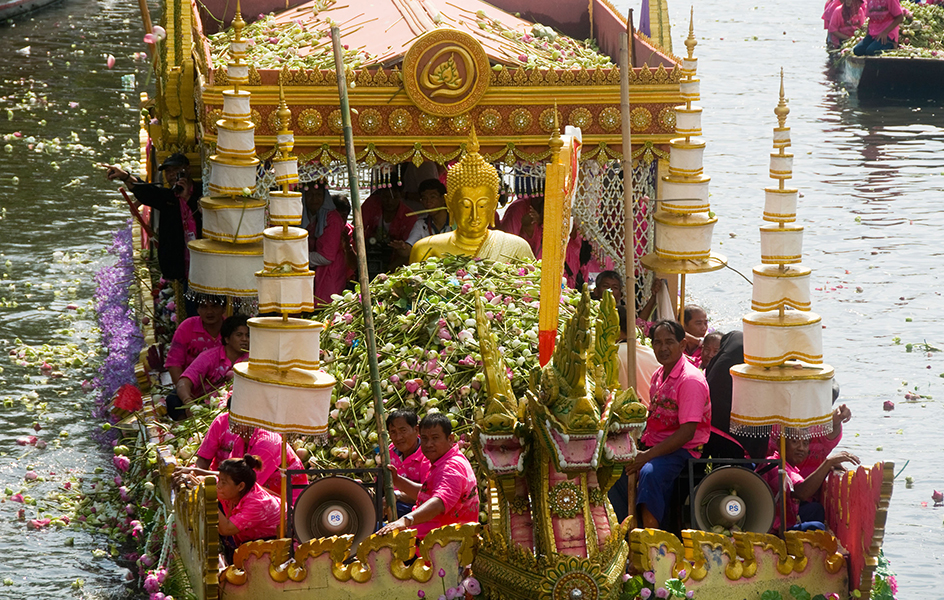
Originally, all flowers were wildflowers. Prehistoric people found wildflowers growing nearly everywhere, from the cold plains of the Arctic to the humid rain forests of the tropics. In time, people learned to grow plants from seeds. They could then raise the prettiest and sweetest-smelling flowers in gardens. By 3000 B.C., the Egyptians and other peoples of the Middle East had begun to cultivate a variety of garden flowers, including jasmines, poppies, and water lilies.
Today, people in every country raise a variety of cultivated flowers. Breeders have developed many new kinds of flowers that are not found in the wild. Thousands of species (kinds) of flowering plants still grow in the wild throughout the world. But many of them are becoming rare as people destroy wilderness areas to make room for farms and cities.
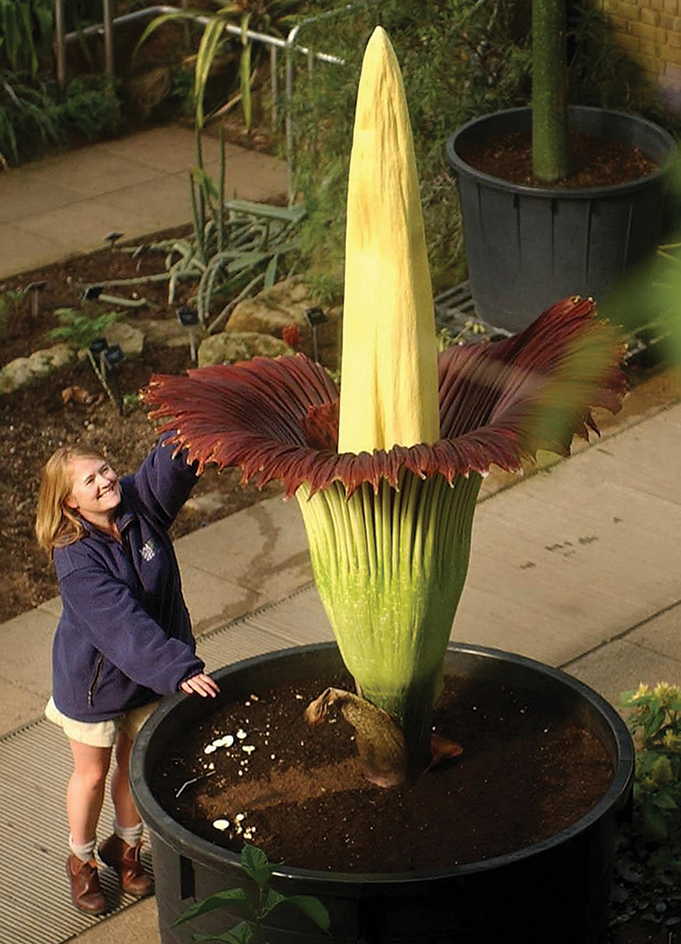
The function of flowers is to make pollen and seeds. Every blossom has male or female parts—or both. The male parts of a flower produce pollen. The pollen contains male sex cells. Female sex cells are found in the ovary, a structure at the base of a flower. In most cases, seeds can develop only after male sex cells in the pollen fertilize female sex cells in the ovary. The seeds then develop in the ovary.
The transfer of pollen from the male parts of a flower to the female parts is called pollination. In many flowering plants, the pollen is carried from the male parts of one flower to the female parts of another. The wind pollinates some kinds of flowers, blowing pollen from the male parts to the female parts. Such flowers often have small, plain, odorless blossoms. Showy or sweet-smelling blossoms attract insects, birds, or other animals. These animals serve as pollinators, helping to transfer pollen from one flower to another. Many kinds of flowering plants also pollinate themselves.
Plants that produce flowers are called angiosperms. The word angiosperm comes from two Greek words meaning vessel and seed. Before the seeds are fertilized, they are protected in the ovary. After the seeds are fertilized, the ovary grows into a structure called a fruit. The fruit encloses and protects the ripening seeds. The rest of the blossom gradually dies.
Scientists believe that there are hundreds of thousands of species of angiosperms around the world. All garden flowers and wildflowers belong to this group. So do nearly all other familiar plants, including cattails, grasses, and palms. One major exception is the gymnosperms. Like angiosperms, gymnosperms reproduce by means of seeds. However, gymnosperms produce their seeds not within fruits but rather in cones or conelike structures. These cones develop from structures that resemble plain flowers. But scientists do not consider them to be flowers in the strict sense of the word. Examples of gymnosperms include ancient plants called cycads, a shrub called ephedra, ginkgo, and pine trees.
For detailed information about plants in general, see Plant. World Book also has hundreds of articles on individual flowers and flowering shrubs. See the list of Related articles with this article.
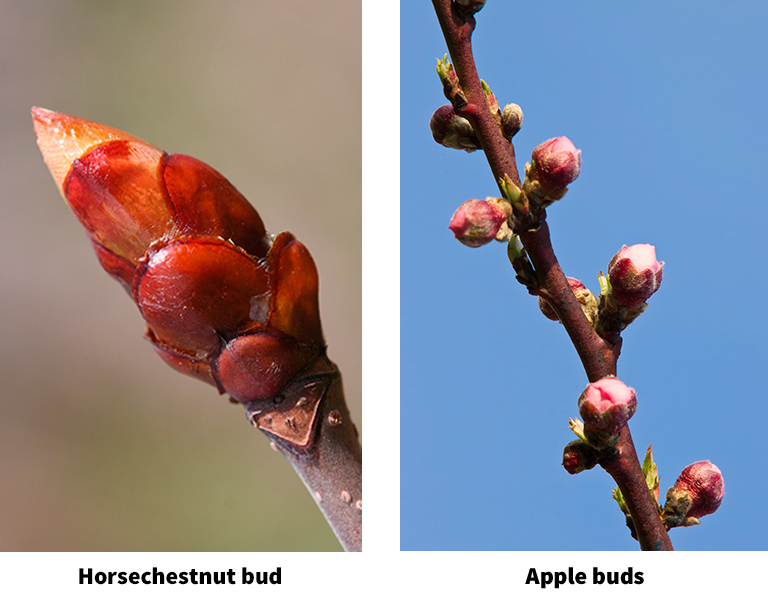
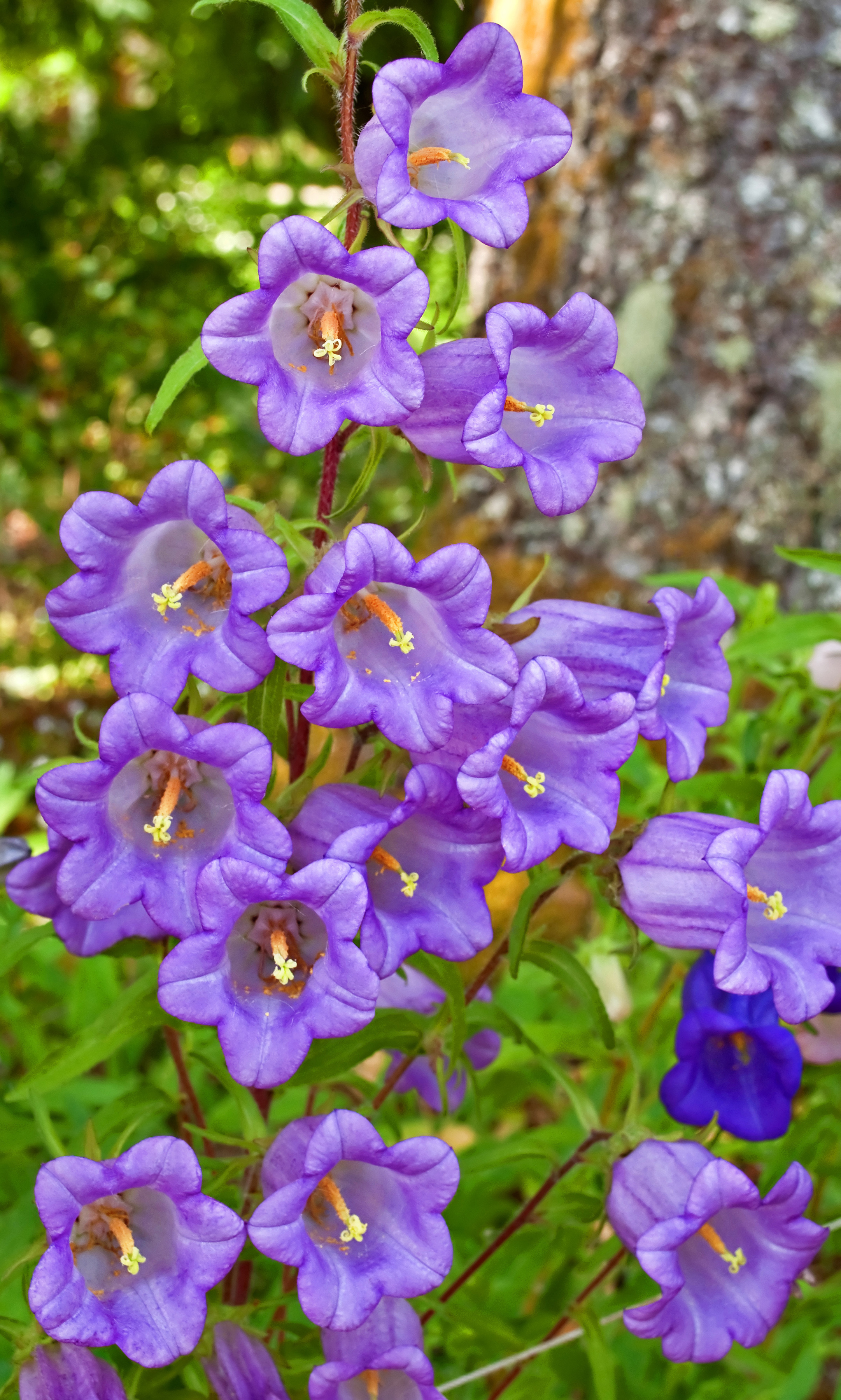
The uses of flowers
The blossoms of most flowering plants have little food value compared with other plant parts, such as the leaves and fruit. Most blossoms also lack chemicals or other materials that are useful for manufacturing. As a result, people use flowers mainly as decoration and in landscaping. The production and marketing of flowers is a major industry in many countries.
As decoration.
People use flowers as table decorations in homes and restaurants. Flowers often decorate the altars in churches and other places of worship. Women may wear flowers in their hair or pinned to their clothing. Hawaiians often string flowers together to make necklaces called leis. Flowers add beauty and color to many public festivals. One of the most famous is the Rose Parade. It is part of the Tournament of Roses held every New Year’s Day in Pasadena, California. The parade features floats decorated with hundreds of thousands of roses and other flowers.
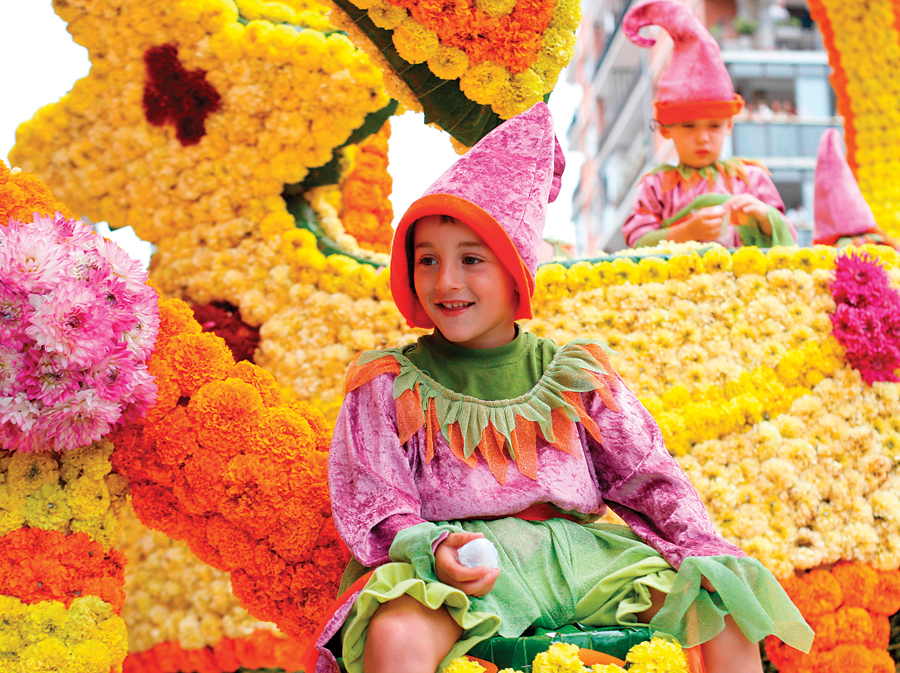
Flowers used as decoration may be either cut flowers or flowering house plants. Cut flowers are garden flowers that were harvested while in bloom. They stay fresh several days if their stems are kept in water. Popular cut flowers include daisies, gladioluses, irises, and roses. Flowering house plants can be grown indoors in containers. Such plants include African violets, azaleas, and wax begonias. Unlike cut flowers, flowering house plants may last almost indefinitely.

Many home gardeners grow their own cut flowers. Greenhouses and flower farms raise them commercially. Greenhouses also grow flowering house plants commercially, as do nurseries. Commercial producers sell their flowers to retail florists. The florists resell them to the public. Many florists are trained in the art of flower arranging. Such florists may supply flowers for such occasions as funerals and weddings. The section Flower hobbies discusses flower arranging.
In landscaping.
Flowers add greatly to the beauty of gardens, parks, yards, and other landscaped areas. The flowers may be planted in beds or borders. They may be arranged according to color, shape, and size. Spring, summer, and autumn varieties may be planted to provide a continuous display of blooms. Some of the most popular plants used in landscaping are flowering shrubs. Such plants include bridal wreaths, forsythias, hydrangeas, and lilacs. Flowering shrubs bloom year after year and require little care.
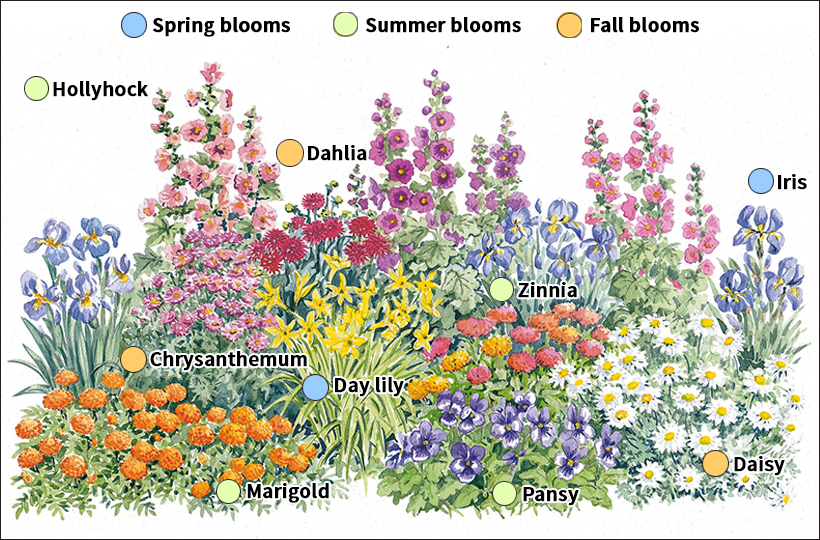
Many public gardens and parks have beautiful displays of flowers. The Missouri Botanical Garden in St. Louis is famous for its water lilies. The Royal Botanical Gardens in Ontario is famous for its lilacs. The Royal Botanic Gardens, Kew, in the United Kingdom, has one of the world’s largest collections of living plants. Kirstenbosch National Botanical Garden in Cape Town, South Africa, cultivates only native plant life, including many endangered wildflowers. The Australian National Botanic Gardens, in Canberra, displays a large collection of plants native to Australia, including many wildflowers.
Other uses.
In most cases, people do not eat flower buds or blossoms. There are some exceptions, however. The flower buds of broccoli, cauliflower, and globe artichoke plants are widely used as vegetables. Broccoli and cauliflower buds grow in thick clusters called heads. The heads are eaten with the stems. Artichoke buds grow singly. Only the bud is eaten. Certain seasonings also come from flower buds or flower parts. For example, cloves are the dried flower buds of the clove tree. Saffron comes from female parts of purple autumn crocuses. The petals of some flowers, such as roses and marigolds, have a sweet or spicy taste. They are sometimes used to flavor soups and salads, especially in Europe and Asia. Some people use dandelion and elderberry blossoms to make wine. Many people consider lightly battered and fried squash blossoms a delicacy.
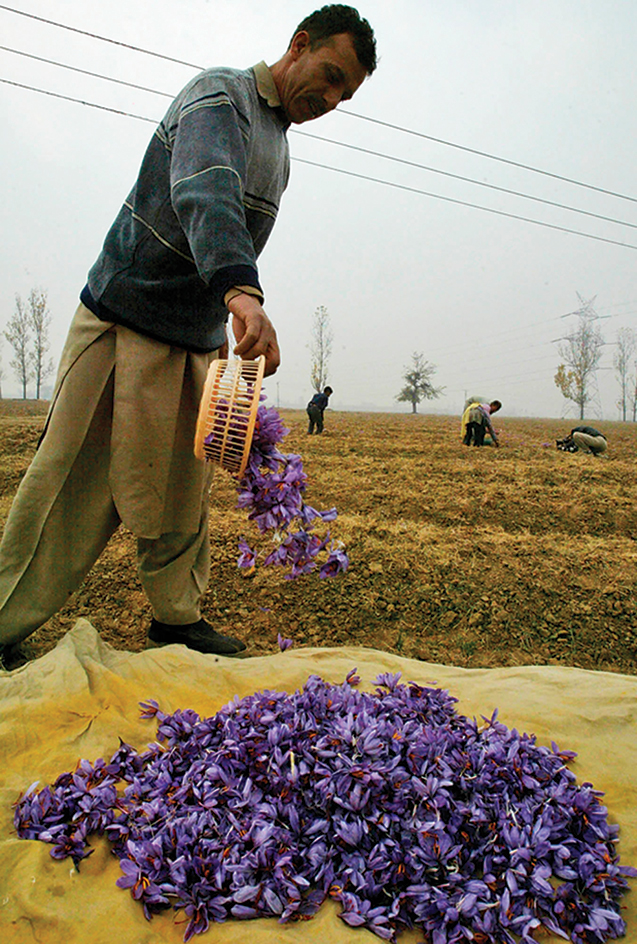
Bees make honey from nectar, a sugary liquid produced by flowers. The bees gather nectar. They eat some of it and store the rest in their hives. The nectar in the hives gradually turns into honey. Some of the most common honey plants include alfalfa, buckwheat, clover, orange, and sage.
The petals of certain flowers contain sweet-smelling oils. Such flowers include jasmines, mimosas, and roses. The oils obtained from these flowers supply the fragrances for many high-quality perfumes. However, most perfumes today are made synthetically from chemicals.
Garden flowers
Some kinds of garden flowers resemble their wild relatives. Other kinds have been bred so that their blooms are more attractive than those of their wild relatives. Garden flowers are grown on farms, in nurseries, in greenhouses, and in gardens. Some kinds of garden flowers also make excellent house plants.
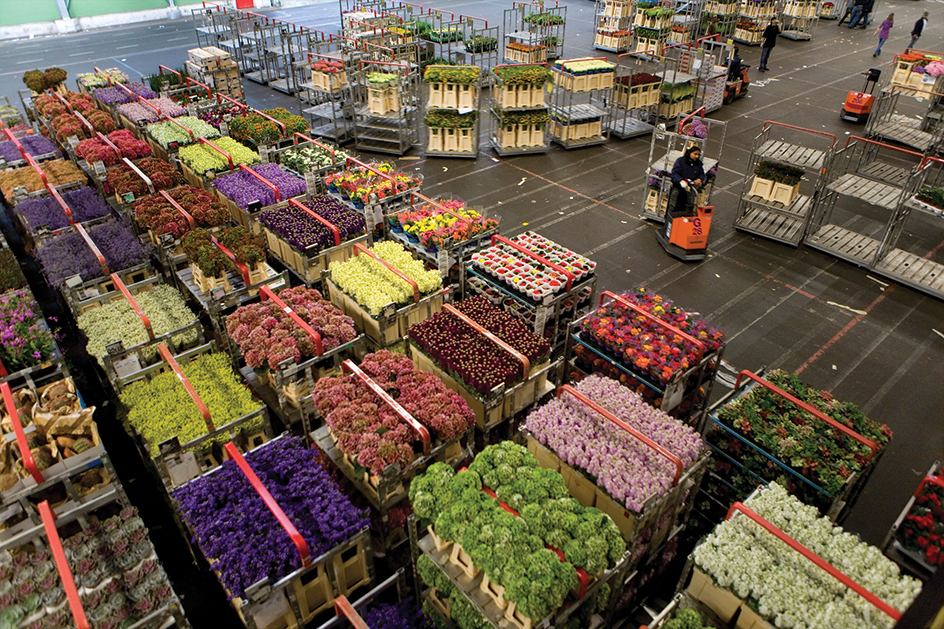
Garden flowers can be divided into three main groups based on how long they live. They are (1) annuals, (2) biennials, and (3) perennials. Annuals sprout from seed, grow to full size, bloom, produce seeds, and die—all within one growing season or year. Biennials live for two growing seasons or years. They do not produce flowers and seeds until their second growing season. After that, they die. Perennials live for three growing seasons or longer. They may or may not bloom during their first year of growth. But after perennials have begun to bloom, they may do so every year almost indefinitely, depending on the species.
Loading the player...Flower blooming
All annuals and biennials are herbs—that is, they have soft stems. Some perennials, called herbaceous perennials, are also herbs. The stems of herbaceous perennials wither and die at the end of each summer in temperate regions. Temperate regions have warm summers and cool or cold winters. However, the roots of herbaceous perennials survive through the winter. They grow new stems in spring. Some kinds of herbaceous perennials grow from bulbs (underground stems). Still others grow from bulblike structures, such as corms or rhizomes. Other perennials, called woody perennials, have woody stems. These plants include shrubs and trees. Their stems do not wither at the end of summer. In temperate regions, however, most woody perennials shed their leaves in autumn. They then go through a period of reduced activity in winter called dormancy.
The great majority of garden flowers are annuals or perennials. Only a few are biennials. However, the classification of flowers as annuals, biennials, or perennials is not always precise. For example, most perennials that are native to warm climates cannot survive cold winters. These flowers therefore cannot be grown as perennials in such places as Canada. But some warm-weather perennials bloom during their first year of growth. They can thus be grown as annuals in northern climates. Such flowers include gloxinias and wax begonias.
Garden annuals.
Most annuals bloom about 8 to 10 weeks after the seeds are planted. In warm climates, annuals can be planted outdoors at any time of the year. In areas with cold winters, gardeners usually plant them in spring. Certain species can survive a light frost. These plants, called hardy annuals, may be started outdoors from seed as soon as the ground has thawed completely. They include bachelor’s buttons, morning-glories, pansies, petunias, sunflowers, sweet alyssum, and sweet peas. However, some hardy annuals, such as pansies and petunias, grow slowly. Gardeners give these flowers a head start by planting them as seedlings. Some gardeners grow their own seedlings. Others buy them from commercial greenhouses. In either case, the seeds are planted indoors in late winter or early spring. The seedlings can be transplanted outdoors as soon as the ground has completely thawed.
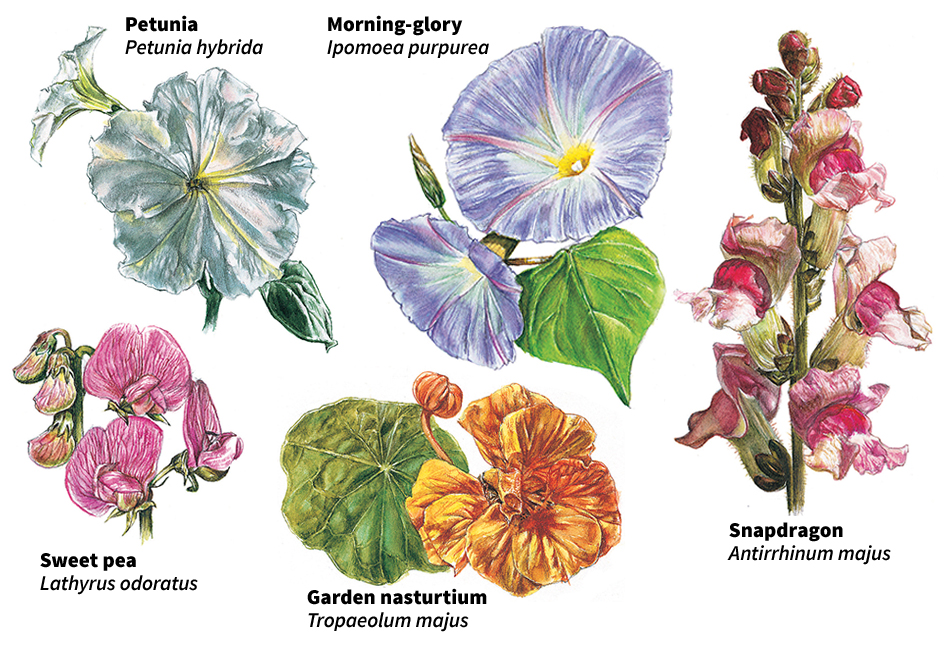
Some annuals, such as garden balsams and marigolds, cannot survive even a light frost. These tender annuals should not be planted outdoors until all danger of frost has passed. In northern regions, frosts may occur for a month or more after the ground has thawed. Gardeners in these regions almost always give tender annuals a head start by sowing the seeds indoors before the growing season begins. They then plant the seedlings outdoors in spring.

Garden biennials.
Gardeners who wish to start biennials outdoors usually plant the seeds in midsummer. The plants grow a few leaves by autumn. The leaves may then die. But the roots survive through the winter. In the next growing season, the plants grow a new stem, bloom, produce seeds, and die. Instead of starting biennials outdoors, many gardeners buy them as seedlings in spring and raise them as annuals.
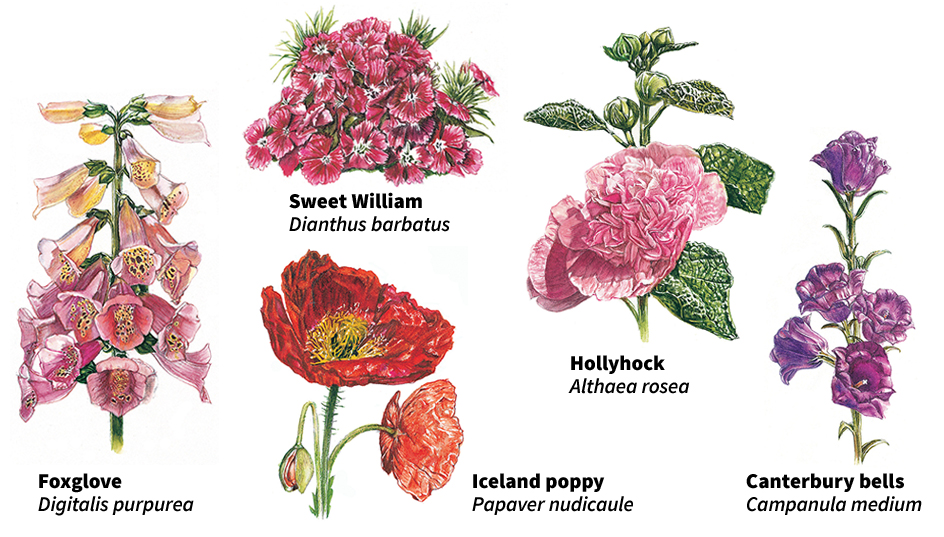
Garden perennials.
Popular garden perennials include asters, bleeding hearts, chrysanthemums, columbines, day lilies, delphiniums, irises, lupines, peonies, poppies, primroses, and violets. Most of these flowers need an annual cold season for the growth of new buds. They therefore do not grow well in tropical climates. On the other hand, warm-weather perennials may be raised indoors in northern climates. Many of them are favorite house plants. Some of these perennials are illustrated in this article under the heading Flowers of the tropics and subtropics. They include African violets, gloxinias, ivy geraniums, and wax begonias.
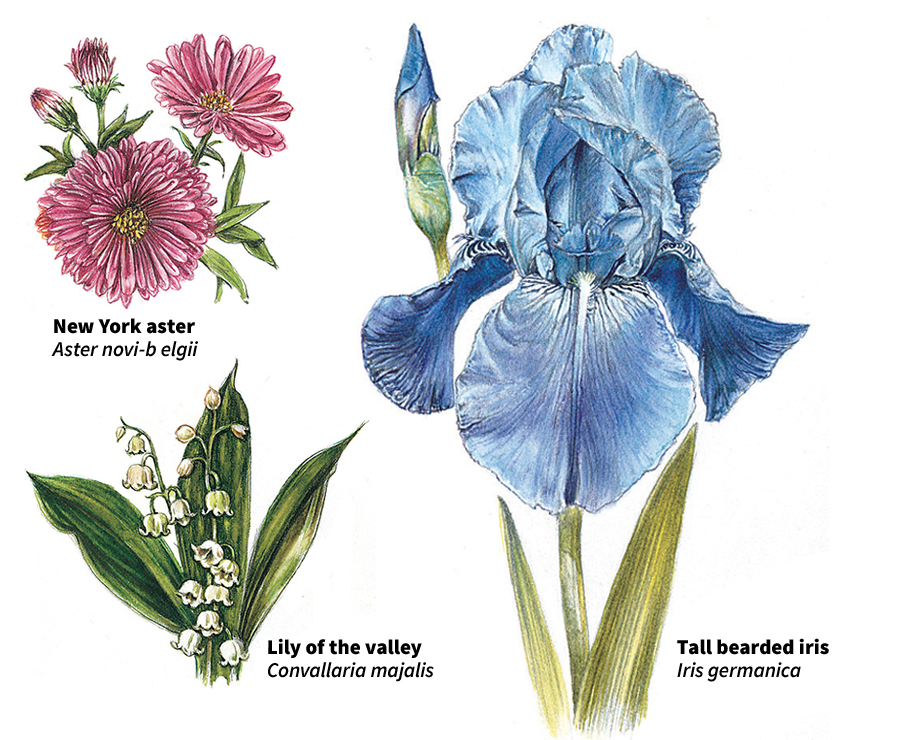
Some perennials, such as columbines and delphiniums, bloom vigorously only three or four years. Most gardeners start these plants from seeds and replace them when necessary. In many cases, perennials are started from cuttings. Cuttings are pieces cut from the stems or roots of adult plants. When planted in water or soil, a cutting develops into a plant identical to the parent. Like seedlings, cuttings should be started indoors. Some gardeners start cuttings taken from their own plants. Others buy cuttings that have already rooted.
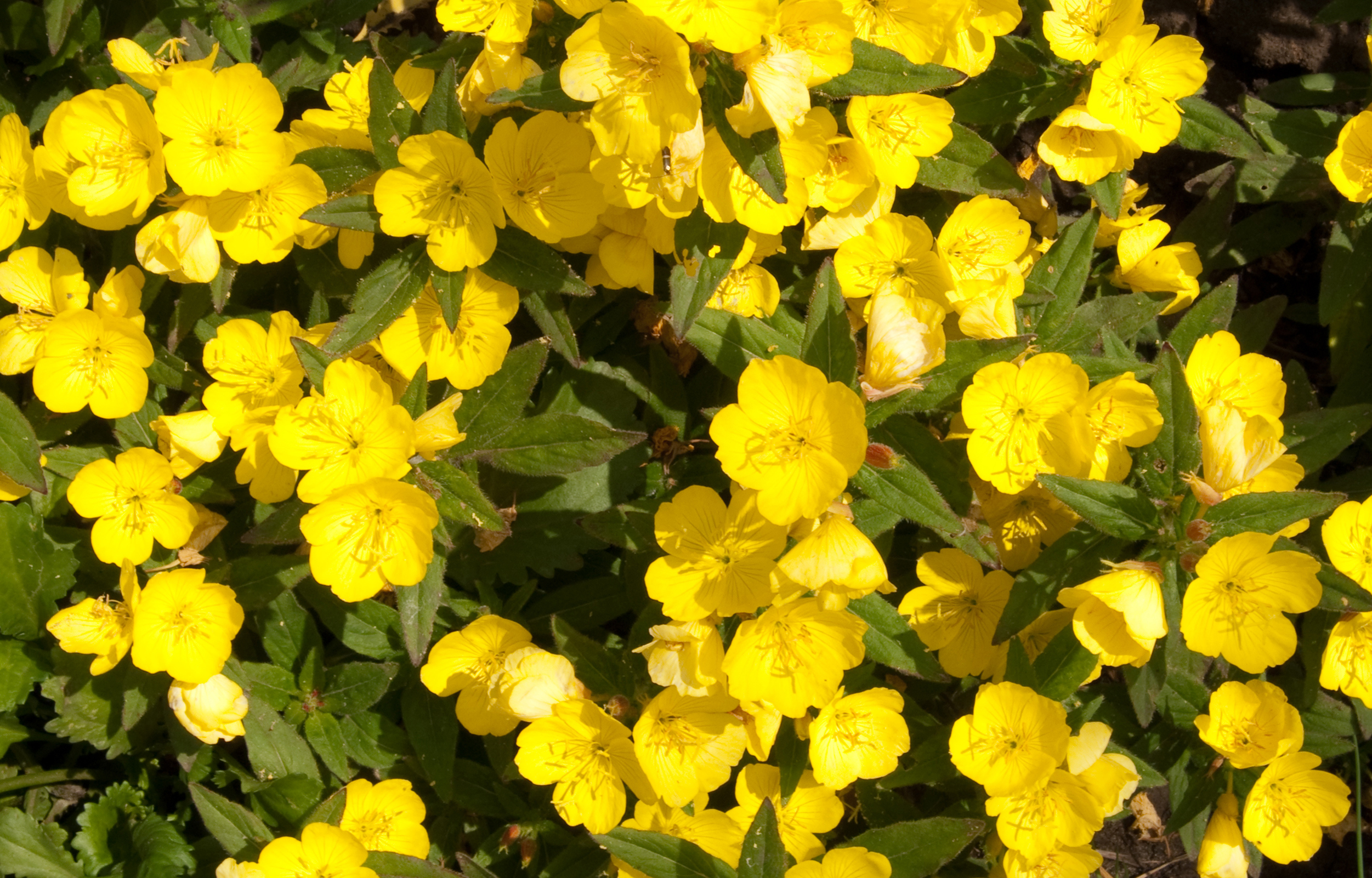
In general, spring is the best time to plant perennials outdoors in climates with harsh winters. Early autumn is usually the best time in warmer climates.
Most perennials spread by sending out shoots from their roots. The shoots develop into new stems. Most species produce new shoots soon after they have bloomed each year. Over several years, the offshoots from only one plant may cover a wide area. But in most cases, the plants bloom better if they are dug up, divided, and replanted every few years.
Garden perennials grown from bulbs.
A bulb is an underground stem with a large bud, wrapped in starchy tissue. The bud develops into a new plant when the weather becomes favorable. The starchy tissue provides the developing plant with food.
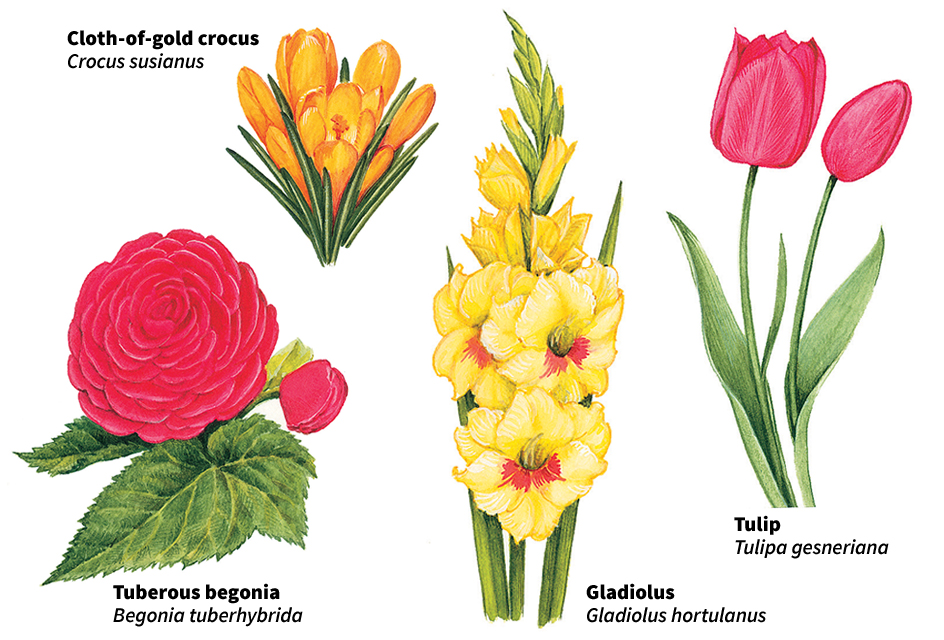
Flowers that grow from bulbs or bulblike structures include crocuses, daffodils, fritillaries, gladioluses, hyacinths, Madonna lilies, tuberous begonias, and tulips. Such plants as crocuses and tulips grow better in cool climates than in warm ones. The bulbs of daffodils, hyacinths, and some other flowers can be left in the ground through the winter in colder climates. Certain other flowers, such as gladioluses, cannot survive in extremely cold weather. Gardeners in colder regions dig up these tender bulbs or rootlike parts in autumn. They store them indoors and replant them outdoors in spring.
Flowering shrubs.
Shrubs, like trees, have woody stems. But shrubs do not grow as tall as trees. Most shrubs also have two or more thin stems, rather than a single thick one. As a rule, flowering shrubs grow best in areas with fairly long summers and cool winters. Some species cannot stand cold weather. Popular kinds of flowering shrubs include azaleas, flowering quinces, forsythias, honeysuckles, hydrangeas, lilacs, redbuds, roses, and spireas.
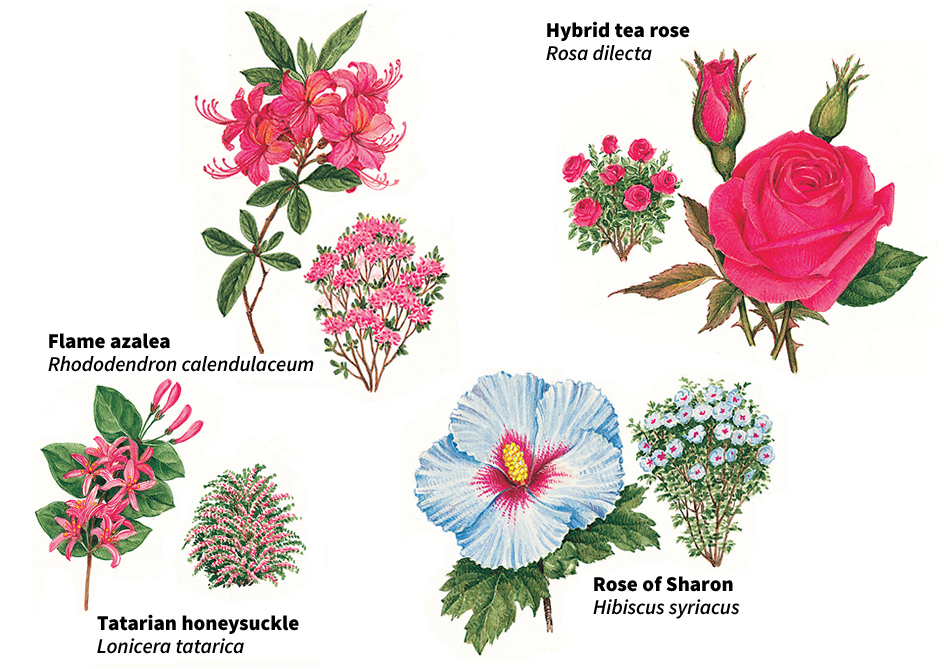
Most beginning gardeners buy shrubs as young plants that are ready to set into the garden. However, gardeners can easily produce their own plants from mature shrubbery. Like herbaceous perennials, many shrubs spread by sending out shoots from their roots. Such shoots will develop into new plants if they are dug up with part of the root and replanted. Shrubs that do not send out shoots can be reproduced from cuttings.
Wildflowers
Each species of flowering plant grows best in a particular type of environment called a habitat. The species may be unable to grow at all in a much hotter, cooler, wetter, or drier location. Gardeners can control a plant’s environment to some extent. They can therefore grow certain flowers in otherwise unfavorable locations. For example, flowers that need ample moisture can be raised in dry climates if the gardener supplies the necessary water. When flowers grow in the wild, they do not receive such special treatment. Each species can survive only in the habitat to which it is naturally suited.
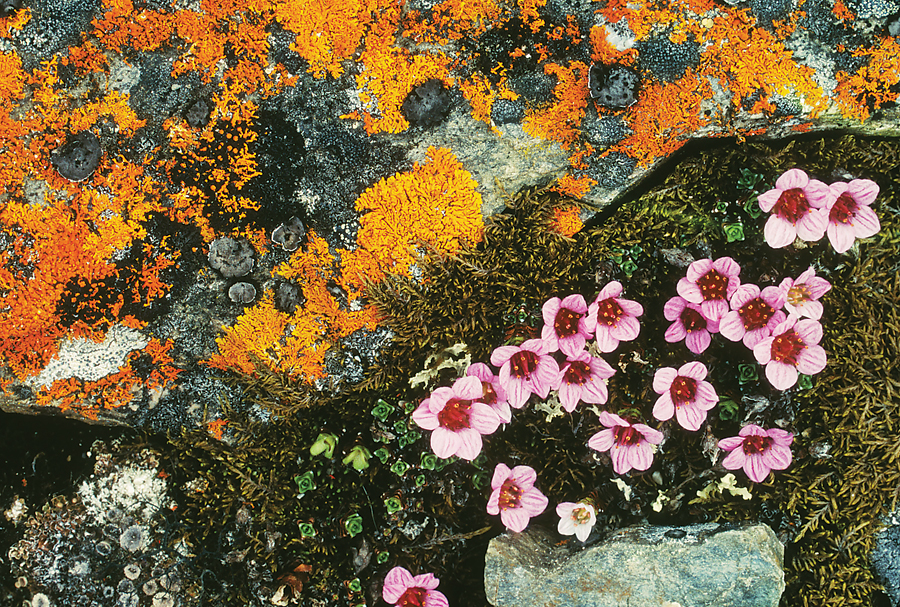
There are hundreds of thousands of kinds of flowering plants in the world. The majority are native to the tropics. The remaining species are native to Europe, North America, and other nontropical regions.
Different species of wildflowers grow in seven major wildflower habitats. These habitats are (1) the Arctic tundra, (2) woodlands and forests, (3) prairies and dry plains, (4) summer-dry regions (regions with mild climates and dry summers), (5) alpine tundras, (6) deserts, and (7) tropical and subtropical regions. In addition, a major wildflower habitat may include various special environments, such as wetlands and shorelines. These special environments have their own types of wildflowers. For example, some varieties of woodland flowers grow mainly in woodland swamps. Aquatic flowers are specially adapted to live in water. They may be found in any environment that has lakes or rivers.

Many wildflowers have spread from their native home to other parts of the world with similar habitats. In some cases, people have introduced the flowers into new areas, either accidentally or on purpose. In other cases, the wind or animals have carried the seeds. Certain seeds easily stick to the bodies of animals. They may be carried long distances by animals that migrate. Wildflowers introduced into North America from other parts of the world include bindweed, chicory, dandelions, furze, mullein, mustard, oxeye daisies, and Queen Anne’s lace. Most of these plants now grow widely throughout North America. Wildflowers native to North America have also been introduced to other parts of the world. They include Canada goldenrod, false indigo, large-leaved beggars ticks, and water pennywort. In many cases, these introduced species become invasive species. Invasive species spread so quickly that they threaten native species (see Invasive species ).
The drawings in this section illustrate typical flowers of each major wildflower habitat. Except for the tropical and subtropical flowers, most of the species pictured are native to North America. In many cases, however, flowers closely related to these species grow in similar environments in other parts of the world.
Flowers of the Arctic tundra.
The Arctic tundra extends across the extreme northern parts of North America, Europe, and Asia. It is a cold, dry, treeless grassland. Most of the region has an annual frost-free period of less than two months. The ground remains frozen all year except at the surface. The surface thaws in spring. It remains soggy throughout most of the summer. The tundra has few annuals. However, a variety of herbaceous perennials thrive there. These hardy plants include cinquefoils, fireweeds, louseworts, poppies, and saxifrages. They come to life suddenly in spring and brighten the brief Arctic summers with their colorful blossoms.
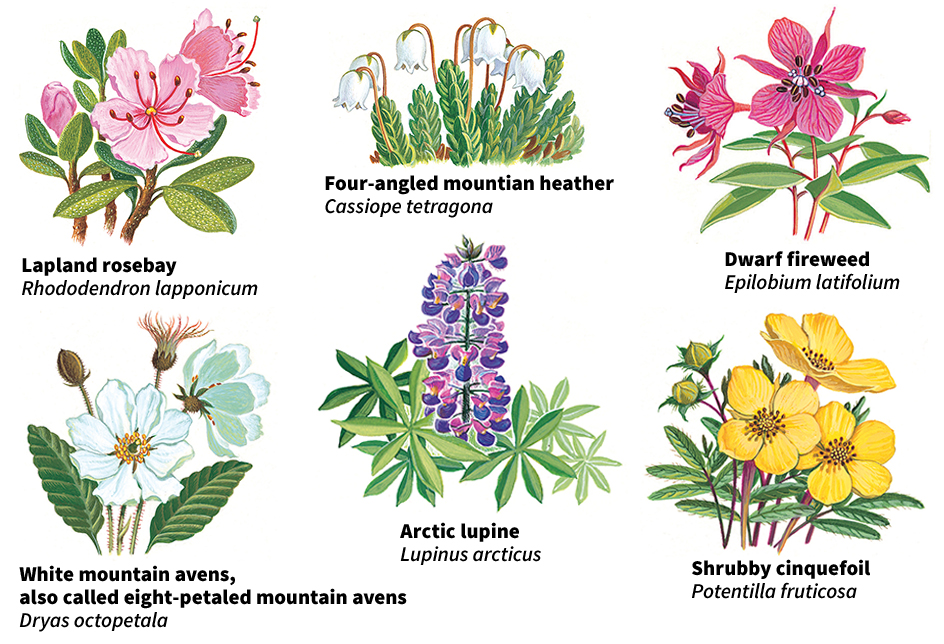
Flowers of woodlands and forests.
Trees need considerable moisture and a yearly frost-free period of more than two months to reach full size. Forests grow only in regions that meet these needs. Seedlings have difficulty competing with established plants in wooded areas. As a result, such areas have few annuals. Nearly all the flowers are perennials.
There are two main types of forests: (1) needleleaf and (2) broadleaf. Needleleaf forests stretch south from the Arctic tundra across most of Canada, northern Europe, and northern Asia. The trees in these forests are mainly gymnosperms rather than flowering plants. However, these forests contain the same kinds of flowers as the tundra. They also have such species as bog orchids, columbines, and pitcher plants.
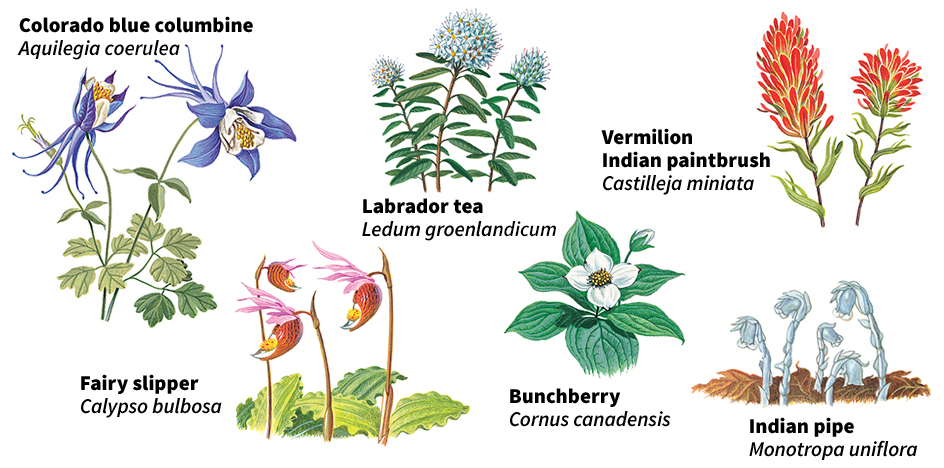
The largest broadleaf forests outside the tropics are in the eastern half of the United States, in eastern Asia, and in western and central Europe. The growth of flowers in these forests is regulated largely by the amount of shade. Many woodland flowers bloom in early spring, before the trees develop leaves, heavily shading the woods. These early-blooming species are called spring ephemerals. They include bloodroots, toothworts, trilliums, and trout lilies. After the woods become shaded, flowers bloom mainly in clearings and in meadows at the edge of the woods. Such species as spiderworts and touch-me-nots blossom in late spring or early summer. Others, such as asters and goldenrods, bloom in late summer or autumn.
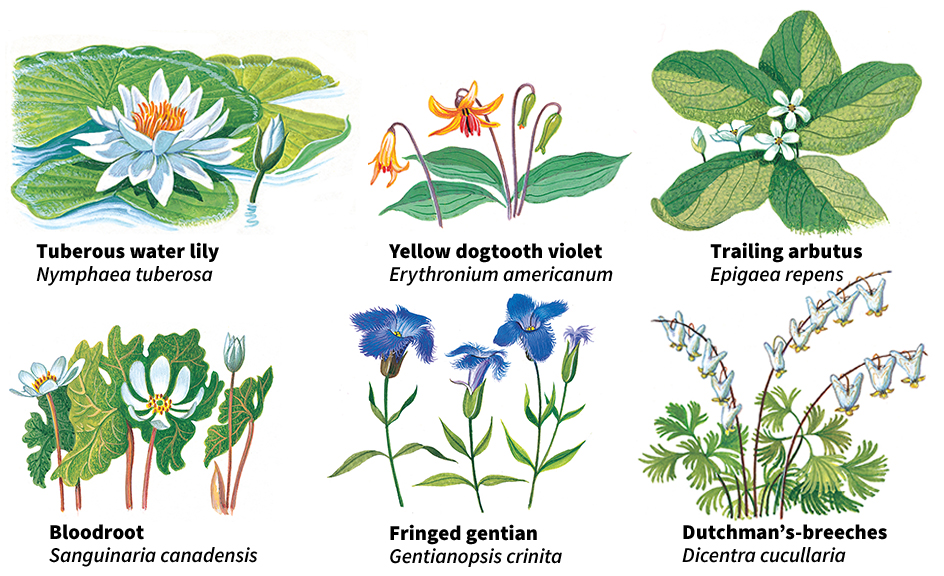
Flowers of prairies and dry plains.
Prairies and dry plains are grasslands. They receive less rainfall than do woodlands. Prairies have hot summers and cold winters. They once covered much of central North America as well as large areas of Argentina, central Asia, and South Africa. Today, people have turned most of these areas into farmland. However, some prairies remain in their natural state. These areas produce tall grasses and traditional spring, summer, and fall flowers. Most prairie flowers are perennials. Grasses grow so thick on prairies that few seeds can penetrate the sod. As a result, annuals have difficulty surviving. Typical North American prairie flowers include blazing stars, pasqueflowers, coneflowers, rattlesnake master, sunflowers, tickseeds, and wild indigo.
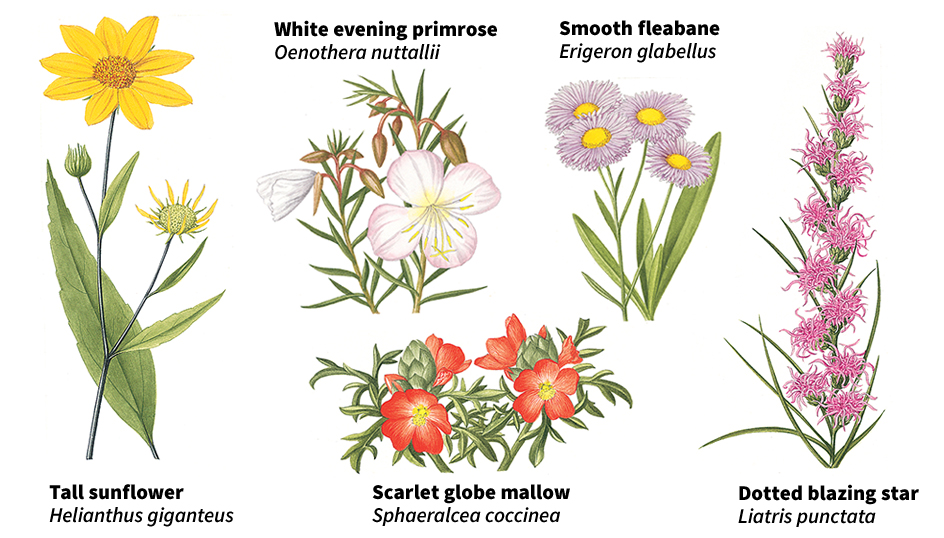
The prairies of the United States and Canada give way to dry plains in the west. These plains, called steppes, receive less moisture than prairies. Because the plains are so dry, short grasses grow better than tall grasses do. Steppes also adjoin the prairies of Argentina, central Asia, and South Africa. The moister areas of the steppes have many of the same kinds of flowers as the prairies. The drier sections have drought-resistant species and more annuals. Typical flowers of the North American dry plains include prickly pear cactuses, low townsendias, scarlet globe mallows, and sunflowers.
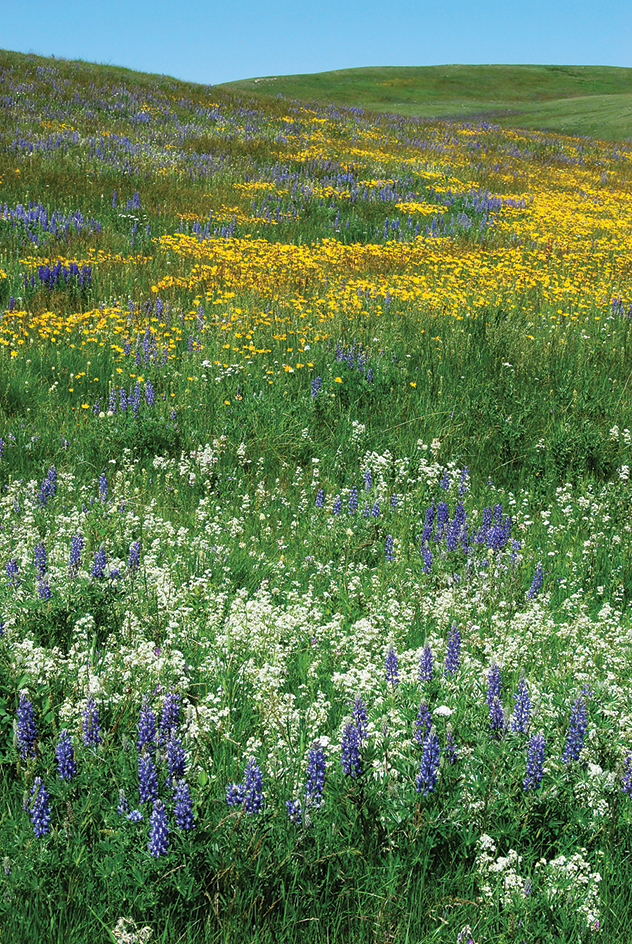
Flowers of summer-dry regions.
Summer-dry regions are found along the Mediterranean Sea, in California, and in parts of Australia, Chile, and South Africa. The mild, moderately dry climate of these regions provides an ideal environment for the growth of wildflowers. A high percentage of these flowers are annuals. Most of these annuals flower in spring. Summer-dry regions include grasslands, woodlands, and chaparrals (regions of shrubs and undersized trees). A tremendous variety of wildflowers thrives in the California chaparral and its neighboring grasslands and oak woodlands. Some of these flowers, such as fiddlenecks and fire poppies, are California natives. Others, such as black mustard and star thistles, originated in the Mediterranean region.

Flowers of alpine tundras.
Alpine tundras lie at high elevations in mountains throughout the world. Like the Arctic, these areas are too cold and dry for trees to grow. But grasses, low shrubs, and a variety of wildflowers thrive. The chief alpine tundras are in the European Alps, the Himalaya of Asia, and the Rocky Mountains of North America. Most alpine flowers grow in mountain meadows. But some species are suited to rocky places. As in the Arctic, the yearly frost-free period is usually less than two months. As a result, nearly all the flowers are perennials. Most are small and grow slowly. Some do not bloom until they are 10 years old or older. Many alpine flowers are the same as those of the Arctic or are close relatives.
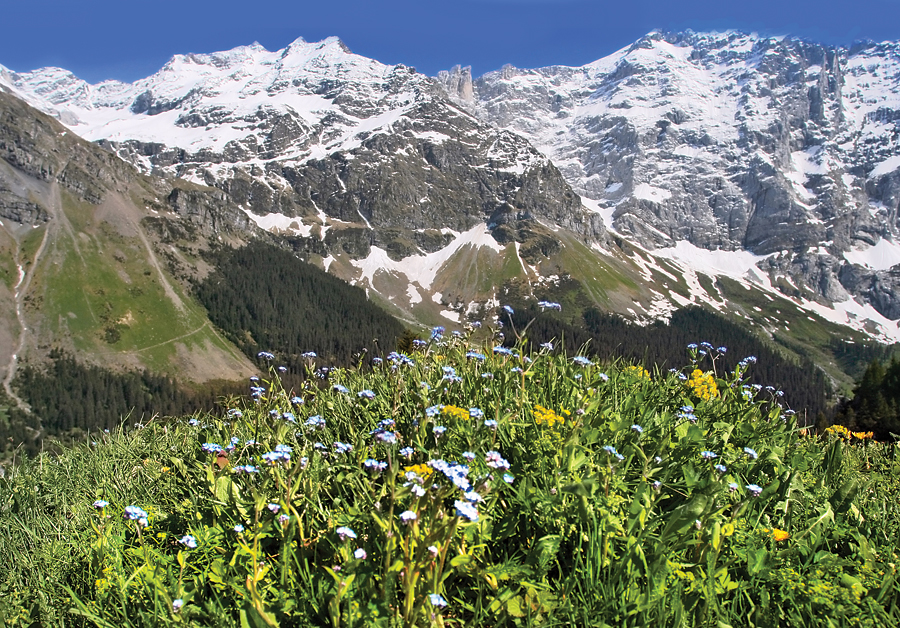

Flowers of the desert.
Deserts are extremely dry regions with a generally warm climate. Most deserts receive less than 10 inches (25 centimeters) of rainfall a year. In some cases, all the rain falls in one or two tremendous cloudbursts. Desert flowers must therefore be able to survive for many months without rain.
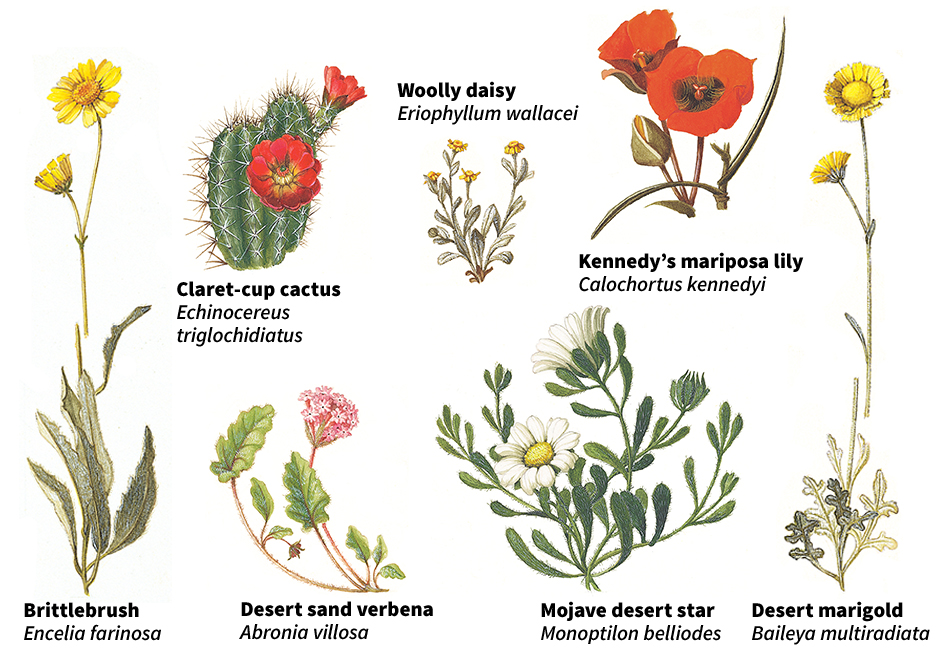
Some desert flowers are shrubs. These plants have vast networks of roots that absorb all available moisture in the soil. Other desert flowers are herbaceous perennials with thick, spongy stems. The stems store water, which the plants use during the long dry spells. Cactuses are the best-known examples of this type of plant. Still other flowers are annuals. Annuals thrive in deserts because they compete with relatively few perennials. In addition, the seeds of many annuals can survive even the longest dry periods. The seeds lie buried until the rains return. Then they sprout, and the plants complete their entire life cycle within only a few weeks.
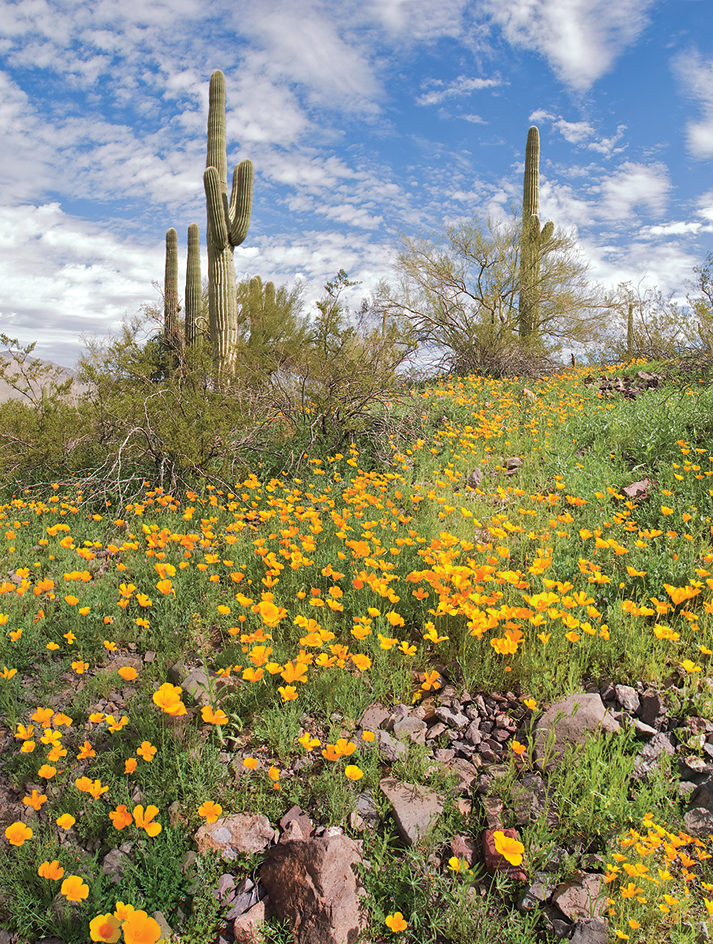
The deserts of southwestern North America have a wide variety of flowers, including most of the familiar kinds of cactuses. Many of the cactuses have beautiful blossoms. Cactuses are common in deserts in North and South America. But they are absent, except where introduced, elsewhere. The North American deserts also have numerous flowering shrubs and hundreds of annuals. The shrubs include such species as brittlebushes and desert mallows. Desert marigolds, devil’s claws, evening primroses, ghost flowers, and sand verbenas are only a few of the many colorful annuals.
Flowers of the tropics and subtropics.
Thousands of species of wildflowers grow in the humid and warm to hot climate of the tropics and subtropics. The tropical rain forests of Central and South America have the greatest variety of tropical flowers. These plants include thousands of kinds of rare and beautiful orchids. Hundreds of species of flowering plants are native to Hawaii. However, many have become extinct or extremely rare as a result of land development and overpicking. Southern regions of China and South Africa have the richest assortment of subtropical flowers. Southern Florida also has many species. Some of them, such as clamshell orchids, are Florida natives. Others, such as bougainvilleas, are introduced species.
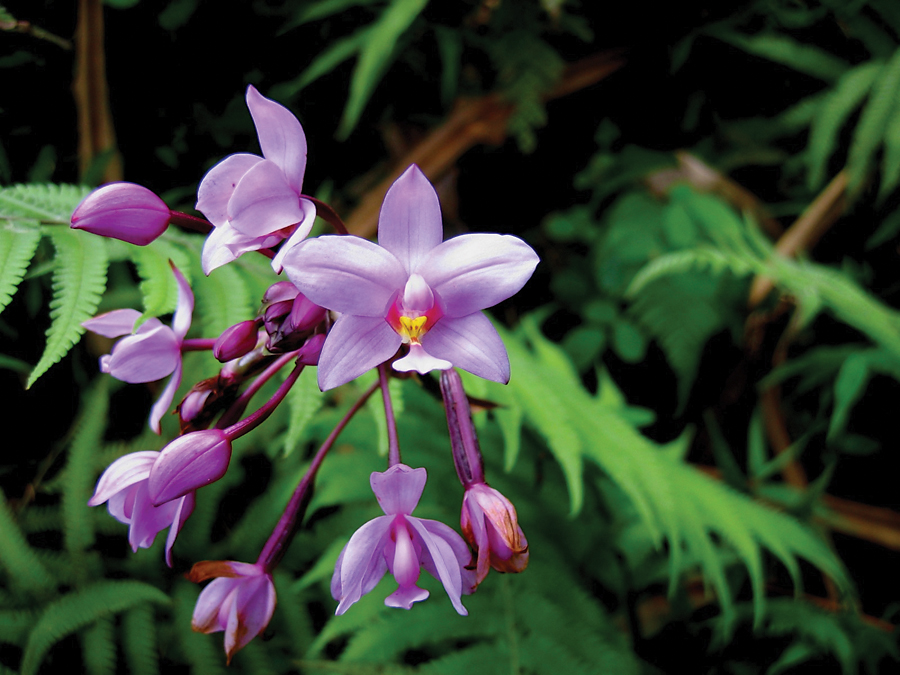
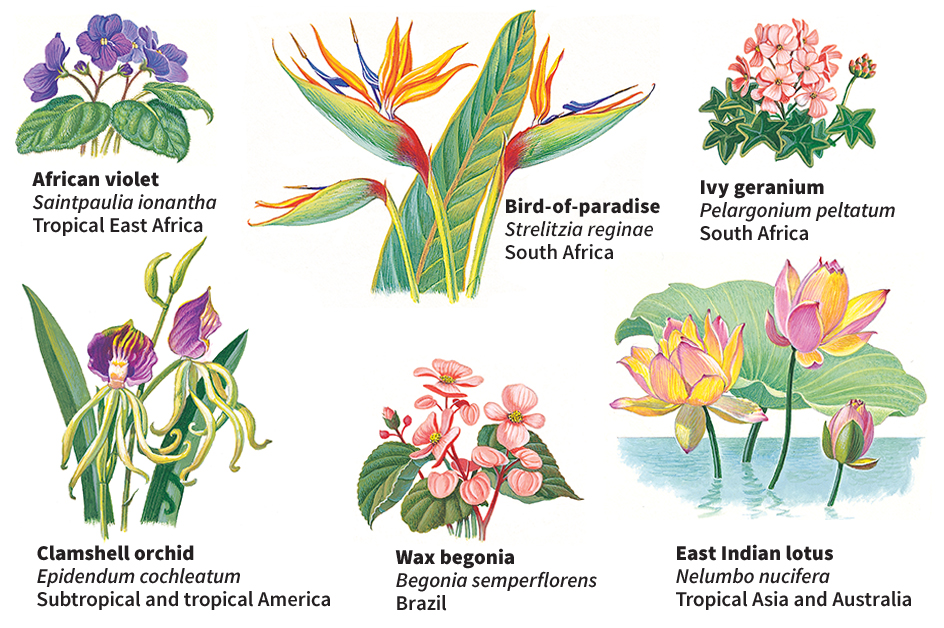
The parts of a flower
The typical flower develops at the tip of a flower stalk. The tip of the stalk is somewhat enlarged, forming a structure called a receptacle. A bud grows from the receptacle and develops into a flower.
Most flowers have four main parts: (1) the calyx, (2) the corolla, (3) the stamens, and (4) the carpels. The calyx is the outermost part of a flower. It consists of a set of leaflike or petallike structures called sepals. The corolla consists of a flower’s petals. The stamens and carpels make up the reproductive parts of flowers. The stamens are the male parts, and the carpels are the female parts. Every flower has either stamens or carpels—or both. Flowers that have all four main parts are called complete flowers. Flowers that lack one or more of the parts are called incomplete flowers. In many wind-pollinated flowers, the calyx and corolla are greatly reduced or absent. In addition to the main parts, many flowers have glands that produce nectar to attract pollinators. These glands, called nectaries, lie near the base of the flower.
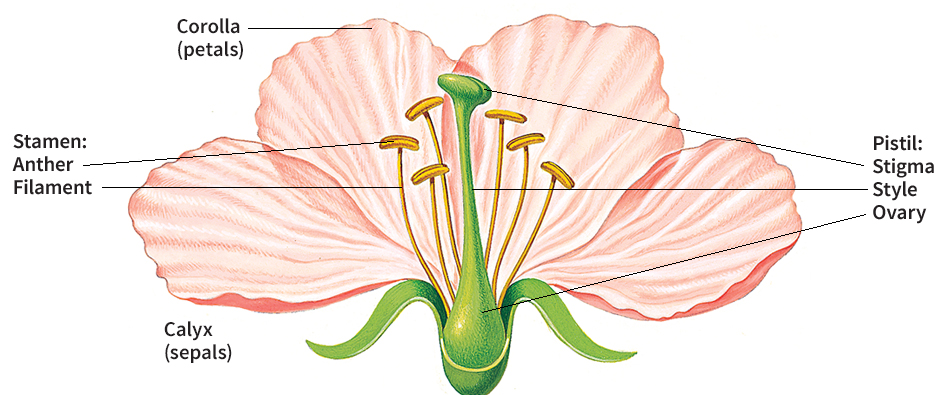
In most flowers, each main part consists of three, four, or five elements or of multiples of three, four, or five elements. In a trillium, for example, three sepals form the calyx, and three petals form the corolla. The flower has six stamens, and the female part consists of three carpels. The elements may be separate from one another, such as the petals of a poppy or a rose. Or the elements may be fused (joined), such as the carpels in trillium. In flowers with fused petals, for example, the corolla is shaped like a tube, bell, trumpet, pouch, or saucer. Flowers with such corollas include morning-glories, daffodils, and petunias. In such species as primroses and verbenas, the petals are fused at the base and free at the tip. The corolla thus has a tubelike or bell-like base and a fringed edge.
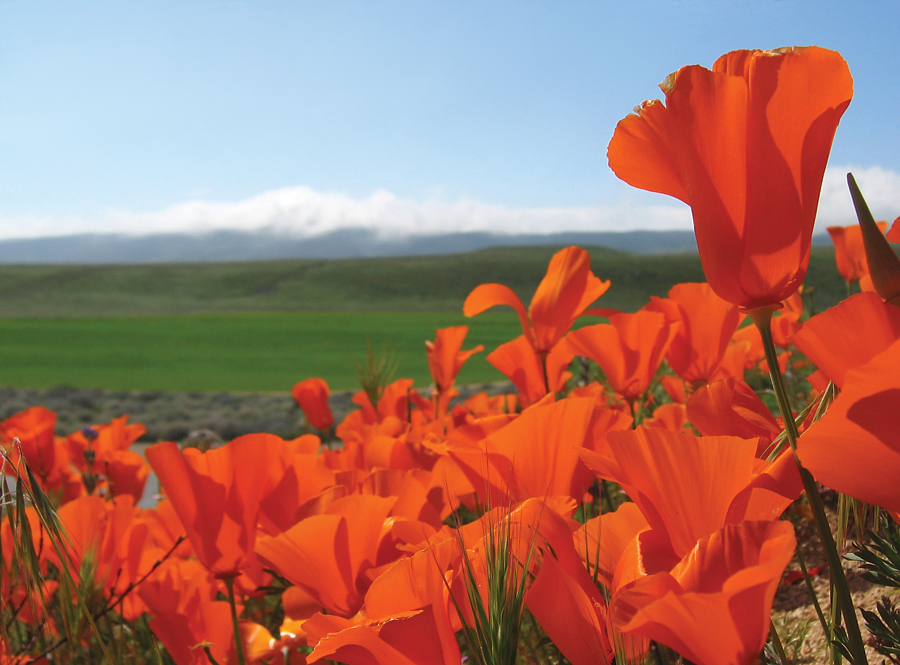
In buttercups, morning-glories, and most other flowers, all the main parts are arranged around the center of the flower in a circular fashion. If we divide the flower in half in any direction, the halves will be alike. Such flowers are considered to be radially symmetrical. Orchids, snapdragons, and certain other flowers can be divided into identical halves only lengthwise. Such flowers are bilaterally symmetrical.
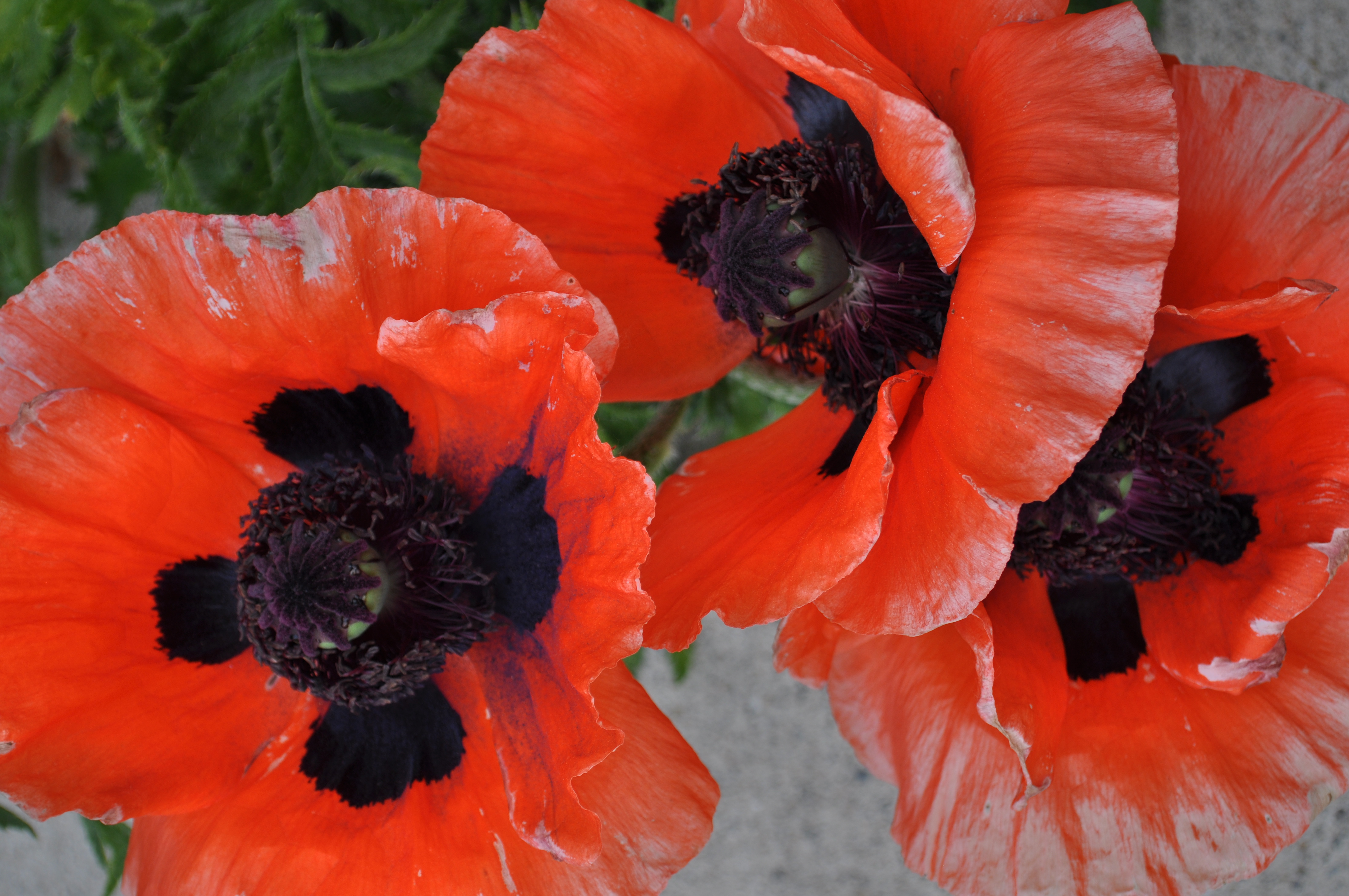
The calyx.
The sepals, which make up the calyx, are the first parts to form among most flowers. They protect the developing inner parts of the flower. The sepals usually remain attached to rest of the flower after it opens.
In many flowers, such as buttercups and magnolias, the sepals are greenish, leaflike structures. Other flowers have sepals that look like petals. Among many members of the iris, lily, and orchid families, the sepals and the petals look so much alike that they cannot be told apart. Botanists call these petallike structures tepals. Certain kinds of flowers have colorful sepals in place of petals. These flowers include anemones, hepaticas, larkspurs, and marsh marigolds.
The corolla
consists of a flower’s petals. It is the showy, brightly colored part of most flowers. The colors of the petals—and of colored sepals—attract insects or birds that help spread pollen. The colors come from chemicals in the plant’s tissues. These chemicals are often present in all parts of the plant, not only the petals or sepals. But large amounts of green or brown pigments mask the bright colors in other parts of the plant. Many flowers also have spots, stripes, or other markings on their petals that attract insects or birds. In most cases, the odors of flowers come from oily substances in the petals. Strong odors, like bright colors, attract animals, including insects.
The stamens
are the male, pollen-producing parts of a flower. They are hard to see in some flowers. In other flowers, the stamens are the most attractive part. For example, male acacia flowers consist mainly of a large feathery tuft of colorful stamens.
In most flowers, each stamen has two parts—a filament and an anther. The filament is a threadlike or ribbonlike stalk. The anther is at the tip of the filaments. It is usually an enlarged part that consists of four tiny baglike structures that produce pollen. After the pollen is ripe, these structures split open and release the pollen.
The stamens are separate from one another in many flowers. But in such species as hollyhocks and sweet peas, some or all of the filaments are fused and form a tube around the carpels. In some flowers, the stamens are fused with other flower parts. For example, the stamens of gentians are fused to the petals, and the stamens of most orchids are fused to the carpels.
The carpels
are the female, seed-bearing parts of a flower. Some flowers, including all members of the pea family, have only one carpel. But most flowers have two or more. In many species, the carpels are fused into one compound structure, often referred to as a pistil.
Among most flowers, each pistil or carpel has three parts—a stigma, a style, and an ovary. The stigma is a sticky area at the top. The style consists of a slender tube that leads from the stigma to the ovary. The ovary is the part at the base that contains one or more structures called ovules. The ovary will develop into the fruits. The ovules will become the seeds.
Variations in flower structure.
Many kinds of flowers grow in clusters called inflorescences. In some species, such as bridal wreaths and snapdragons, the individual flowers in each cluster are easy to identify as flowers. In other species, the inflorescence looks like a single flower. The individual flowers that make up the inflorescence look like petals. These species include the many members of the composite family, such as asters, chrysanthemums, dandelions, and sunflowers.

Among members of the composite family, the flowers grow from a head at the tip of the flower stalk. Each head has several or many flowers, depending on the species. A dandelion head, for example, may have 100 or more tiny yellow flowers. Each flower, or floret, looks like a petal. But it consists of a calyx, a corolla, stamens, and a pistil. One petal makes up the corolla. The dandelion florets grow so close together that only their corollas can be seen.
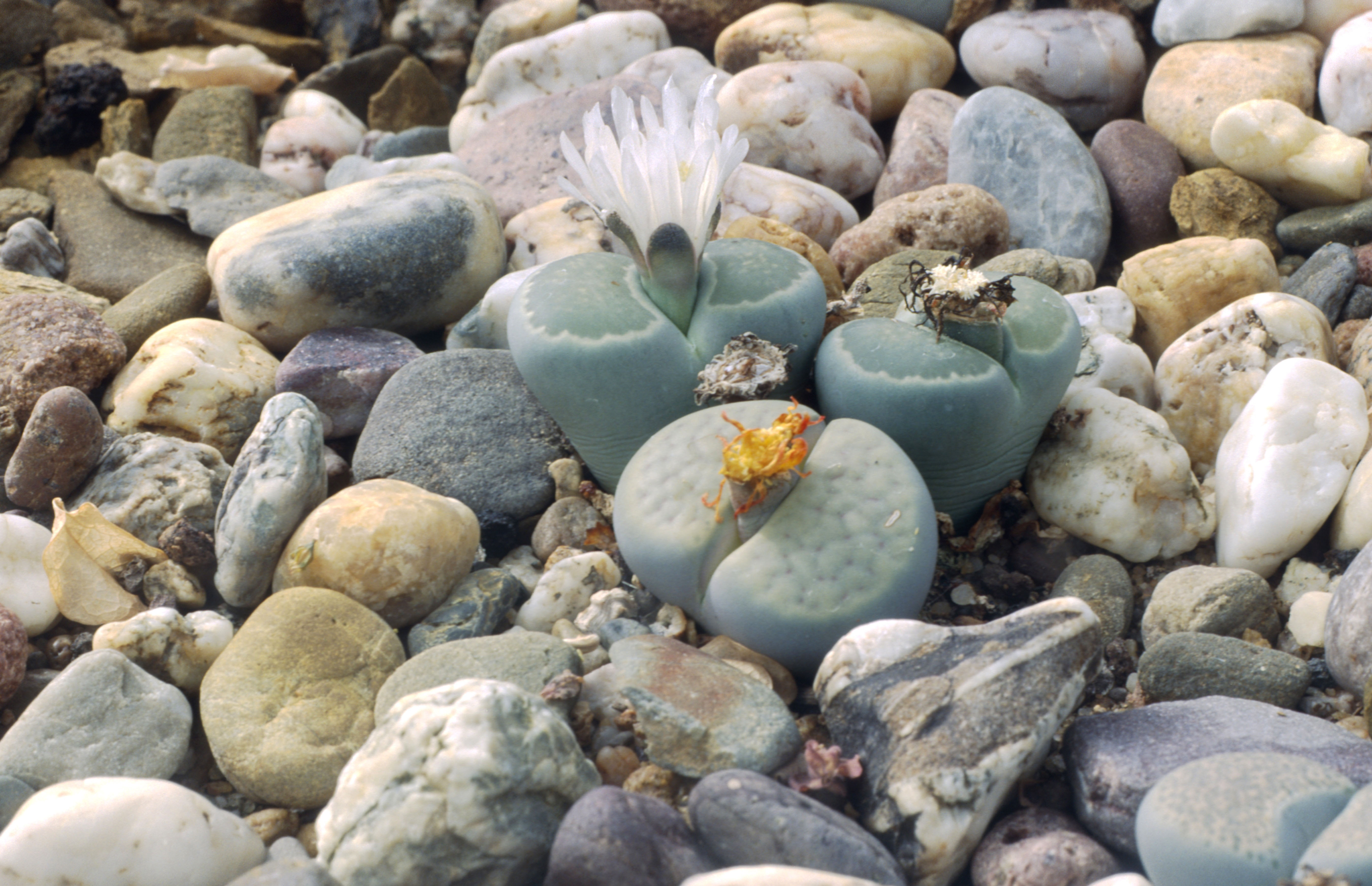
The flowers of some plants grow in plain, tassellike inflorescences called catkins. A catkin is composed of naked flowers—that is, flowers that lack both petals and sepals. Plants that have catkins include alders, poplars, and willows.
Many plants that have inflorescences also have leaflike structures called bracts just beneath each flower cluster. Most bracts are small and green. But in a few species, they are so large and showy that most people mistake them for part of the flower. The showy “petals” of bougainvilleas, dogwoods, and poinsettias are bracts. The flowers themselves are small, plain-looking inflorescences at the center of the bracts.
Among most species of flowering plants, each plant bears flowers that have both stamens and pistils. Such flowers are called perfect flowers. In some species, however, each plant bears flowers that have either pistils or stamens, but not both. Such flowers are called imperfect flowers. If a flower has pistils but no stamens, it is called a pistillate flower. If it has stamens but no pistils, it is called a staminate flower. In some species, staminate and pistillate flowers grow on the same plant. Such species are known as monoecious species. They include begonias, oaks, and squashes. In other species, the male and female flowers grow on different plants. Such species are known as dioecious species. Dioecious species include poplars, willows, and American holly.
The role of flowers in reproduction
Flowering plants reproduce sexually. Sexual reproduction requires both male and female sex cells. The sexual parts of their blossoms produce these cells. The male cells, called sperm, are in the pollen produced by the stamens. The female cells, called eggs, are in the ovules produced by the carpels. The sperm and egg cells unite in the ovule and develop into seeds.
Reproduction in flowers involves two main steps: (1) pollination and (2) fertilization. Pollination is the transfer of pollen from a stamen to the stigma of a carpel. Fertilization is the union of a sperm cell with an egg cell. Fertilization occurs in much the same way in all flowering plants. However, there are two methods of pollination: (1) cross-pollination and (2) self-pollination. Cross-pollination involves the transfer of pollen from a stamen on one plant to a pistil on another plant. In self-pollination, pollen is transferred from a stamen of one flower to a pistil of the same flower or to a pistil of another blossom on the same plant.
Cross-pollination
is the method of pollination in most flowering plants. This method requires an agent to carry the pollen from flower to flower. Insects are the most common agents of cross-pollination.

Many insects depend on flowers for food. Bees live on nectar and pollen. Certain beetles and flies also feed on both nectar and pollen. Butterflies and moths live on nectar. As an insect travels from flower to flower in search of food, pollen grains stick to its body. Some or all of these grains may brush off onto the stigmas of some flowers that the insect visits. One or more of these flowers may thus become cross-pollinated.
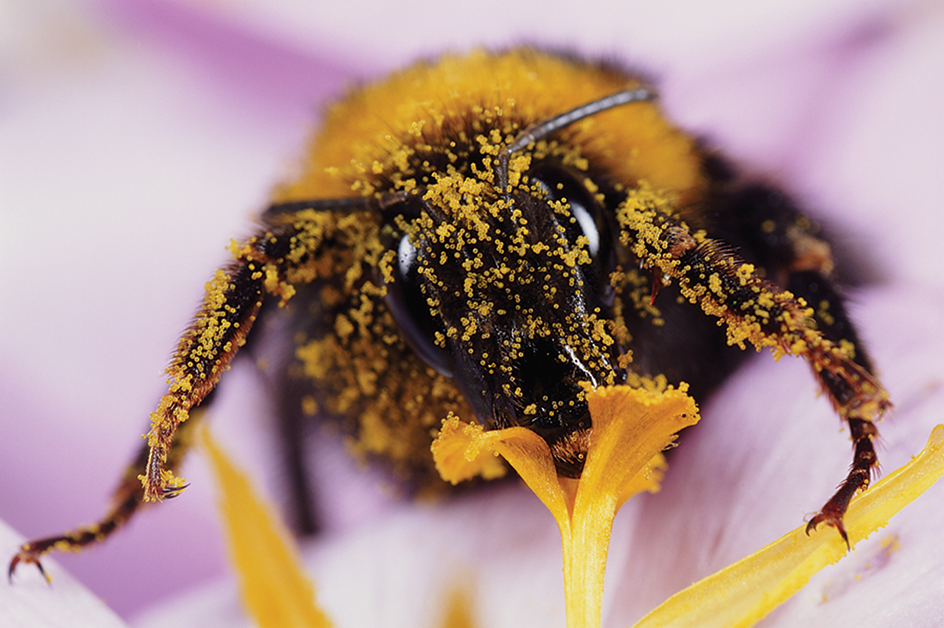
When searching for food, an insect could easily fail to visit a particular kind of flower unless the flower attracted it. Most flowers that depend on insects for pollination are brightly colored or strongly scented. Each kind of pollinating insect is attracted by certain colors or odors. It thus visits certain flowers rather than others. However, most insect-pollinated flowers are pollinated by more than one kind of insect. For example, moths and butterflies visit many of the same flowers. A few kinds of insects and flowers have developed highly specialized relationships with each other. Such flowers are pollinated only by a particular kind of insect. For example, yucca moths are the only insects that pollinate yucca plants.
Bees.
More kinds of flowers are pollinated by bees than by any other kind of insect. Bees cannot see the color red. Otherwise, they have a keen sense of sight. They also have a well-developed sense of smell. Bees are strongly attracted by yellow and blue blossoms, especially those with a sweet odor. Bees can see ultraviolet light, a kind of light invisible to human beings. Many flowers, particularly yellow ones, have elaborate ultraviolet markings. These markings attract bees to the flowers and even pinpoint the location of the nectaries.
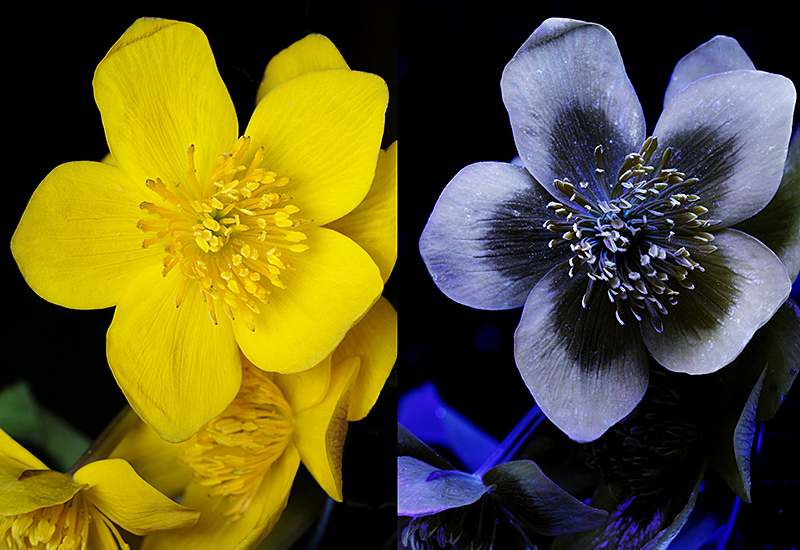
Many of the flowers pollinated by bees have a highly complicated structure to encourage cross-pollination and discourage self-pollination. For example, a bee can reach the nectar of a snapdragon only after brushing against the stigma. It then cannot leave the flower without touching the pollen. Furthermore, the bee cannot touch the stigma after it touches the pollen.
Butterflies and moths
are attracted to flowers that produce abundant nectar. In many such flowers, the nectaries are long and tube-shaped or lie at the base of a long tube-shaped corolla. Butterflies and moths have exceptionally long, tubelike mouthparts. They use them to reach into these structures and suck up the nectar. Butterflies prefer flowers with sweet-smelling yellow or blue blossoms.
Unlike most bees and butterflies, many moths rest during the day and search for food at night. Many of the flowers that attract moths open only at night. Most of these flowers are pale-colored or white. The light colors make them easier to see at night than dark blossoms. Many of the flowers are also strongly scented and give off their scent only at night. Flowering tobacco and various kinds of evening primroses and honeysuckles are among the plants commonly pollinated by moths.
Beetles and flies.
Beetles visit flowers in which both nectar and pollen are plentiful. They prefer white or dull-colored flowers with spicy odors, such as magnolias and wild roses.
The mouthparts of most flies are not long enough to suck nectar from tube-shaped flowers. These flies usually visit flowers with flat corollas, such as hawthorn blossoms and buttercups. Some flowers, such as carrion flowers and skunk cabbages, give off a foul odor that attracts flies.
Other agents.
Some birds feed on nectar and so help pollinate flowers. Unlike most pollinating insects, birds have a weak sense of smell. But birds have sharp vision. They also see red as well as other colors. Most odorless red flowers are pollinated by birds. In North America, hummingbirds are the chief bird pollinators. Hummingbirds are particularly attracted to red, orange, and yellow flowers. Such flowers include cardinal flowers, columbines, fuchsias, and Indian paintbrushes. Bats and wind are also agents of pollination. Bats pollinate certain strongly scented flowers of the tropics. Wind spreads the pollen of most plants with flowers that lack petals and sepals. These plants include grasses, oaks, ragweeds, and sedges.
Self-pollination.
Many species of plants normally pollinate themselves. Such plants include barley, oats, peas, and wheat. However, self-pollination also occurs frequently in many species that depend on cross-pollination. In such cases, pollen may simply fall onto a stigma of the same plant.
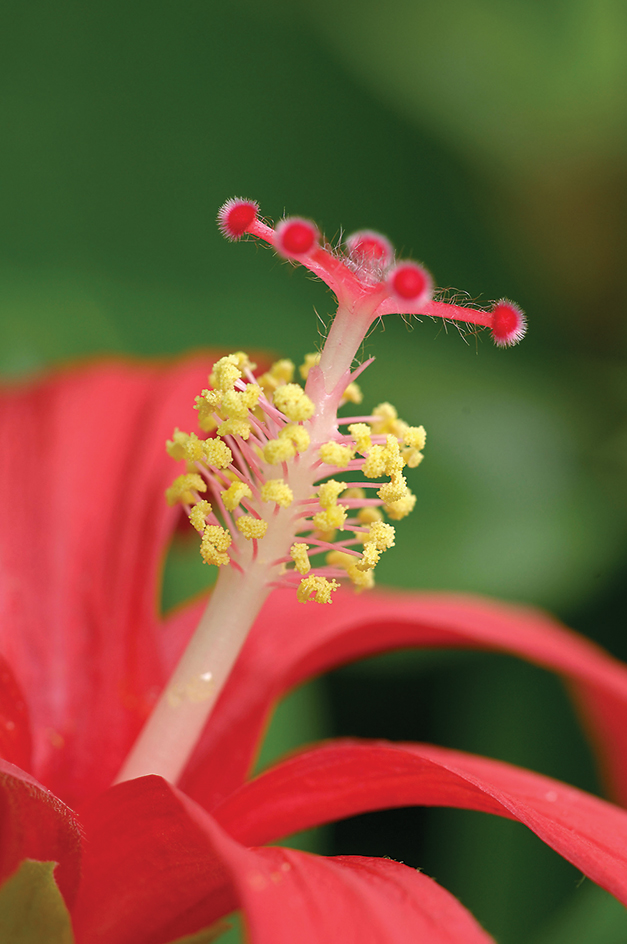
Self-pollination is impossible in dioecious species because the male and female flowers grow on different plants. In addition, many other plants have characteristics that discourage or prevent self-pollination. In such flowers as hibiscuses and lilies, for example, the stamens are much shorter than the pistils. Any pollen that drops from the stamens is therefore unlikely to reach a stigma of a pistil on the same plant. In some plants, the stamens and carpels mature at slightly different times, preventing self-pollination. Many kinds of plants, such as flowering tobacco and rye, have chemicals in their cells that prevent self-pollination.
Fertilization.
In flowering plants, a unique type of fertilization known as double fertilization occurs. A pollen grain that lands on a stigma may grow a pollen tube. The tube pushes its way down the style to an ovule in the ovary. Sperm from the pollen grain travels down the tube to the ovule. Fertilization occurs when a sperm unites with an egg cell in the ovule. The fertilized egg cell develops into an embryo (partly developed plant). Simultaneously, another fertilization takes place. This fertilization gives rise to endosperm tissue. Endosperm tissue provides energy and nutrients for the embryo. A seed then begins to develop that includes the embryo and endosperm. The ovary itself develops into a fruit that encloses the seed. For an illustration of this process, see Plant (The reproduction of plants) .
An ovary may be penetrated by many pollen tubes. The number of seeds that develop depends on the number of ovules. An ovary that has only one ovule develops into a single-seed fruit, such as an acorn or cherry. An ovary that has many ovules develops into a fruit with many seeds, such as an apple or watermelon.
Flower hobbies
Two of the most popular flower hobbies are outdoor and indoor gardening. They are discussed in Gardening . This section deals with three other flower hobbies. They are (1) studying wildflowers, (2) flower arranging, and (3) flower breeding.
Studying wildflowers.
To study wildflowers scientifically, you must be able to identify them. Handbooks help provide such identification. Most of these books deal with the flowers of a particular region.
One way to learn about wildflowers is to study them in their natural surroundings. For example, you might try to identify all the species in a particular area, such as a meadow. By taking careful notes and revisiting the location at various times of the year, you can produce a “biography” of the flowering plants there. Another way of studying wildflowers is by collecting them. However, you must follow certain rules in picking wildflowers.

Rules for picking wildflowers.
As many as one-third of the world’s native flowering plants are threatened with extinction. Most countries and local governments have laws or regulations that prohibit picking wildflowers in public parks and forests. Such laws help conserve the species. But they also help preserve the blossoms so that more people can enjoy them.
In an area not protected by conservation laws, do not pick a flower unless that species is plentiful in the area. As a general rule, never dig up the roots of wildflowers.
Preserving wildflower species.
The easiest way to preserve flower specimens is by pressing them. This method can preserve not only the blossoms of wildflowers but also the entire plant, including the roots. While a specimen is still fresh, arrange it between two sheets of newspaper. Then place the newspaper between two stacks of blotting paper or between the pages of an old phone book. Apply pressure by tying the blotting paper or phone book into a tight bundle or by using a weight. The pressure flattens the specimen. It also squeezes out the moisture. Change the newspaper wrapping daily and move the specimen to a dry part of the blotting paper or phone book. After 7 to 10 days, the specimen should be dried out, unless it was especially juicy. The preserved specimen will last almost indefinitely if protected from moisture and insects.
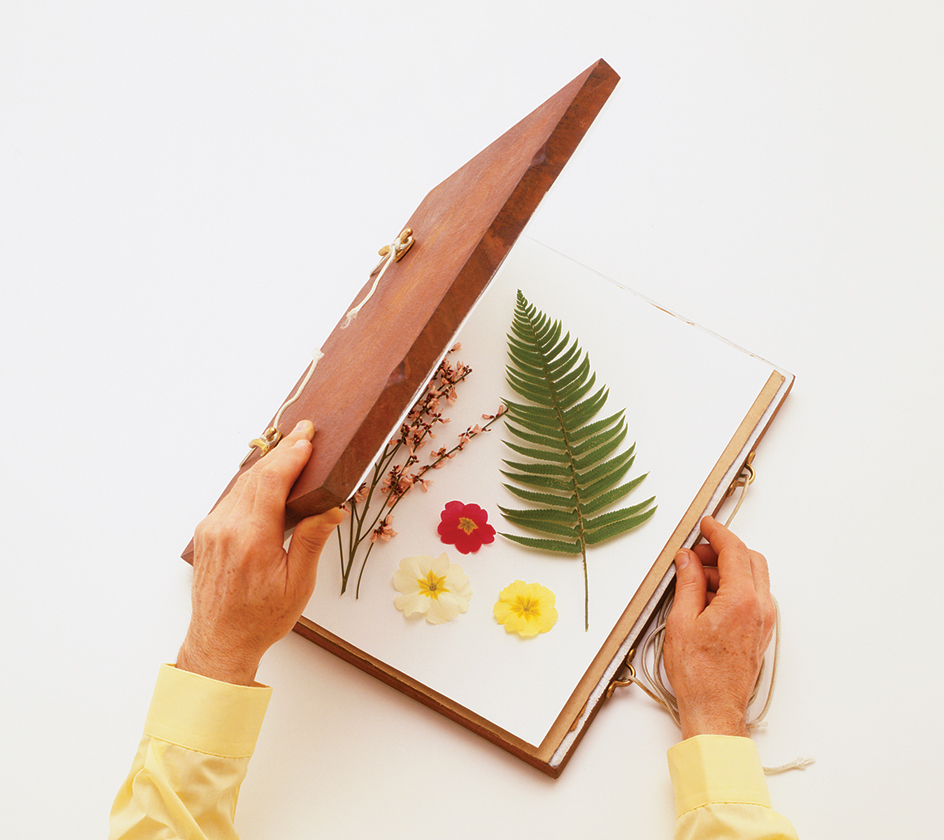
Tape or glue each finished specimen to a sheet of heavy paper. Then label the mounted specimen. Include its common and scientific names, the place where the flower was found, the date it was picked, and any interesting facts about its growing habits. An organized collection of mounted pressed flowers is called a herbarium. See Herbarium .
Flower arranging.
The ancient Egyptians, Greeks, and Romans all practiced the art of making decorative arrangements of cut flowers. However, the art developed to its fullest in Japan. The Japanese tradition of flower arranging dates from the 500’s. At that time, Japanese Buddhists began to make floral arrangements in an elaborate style for the altars of their temples. Over time, the Japanese refined and simplified this style and worked out its artistic principles. These Japanese principles had a strong influence on flower arranging in many other countries.
The Japanese style tries above all to make each floral arrangement look natural, as if it were growing outdoors. Flower arrangers follow carefully worked out principles of design and color to achieve this natural effect. They use leaves and stems as major elements in many arrangements. In Europe and the Americas, on the other hand, traditional styles of flower arranging tend to emphasize only the blossoms.
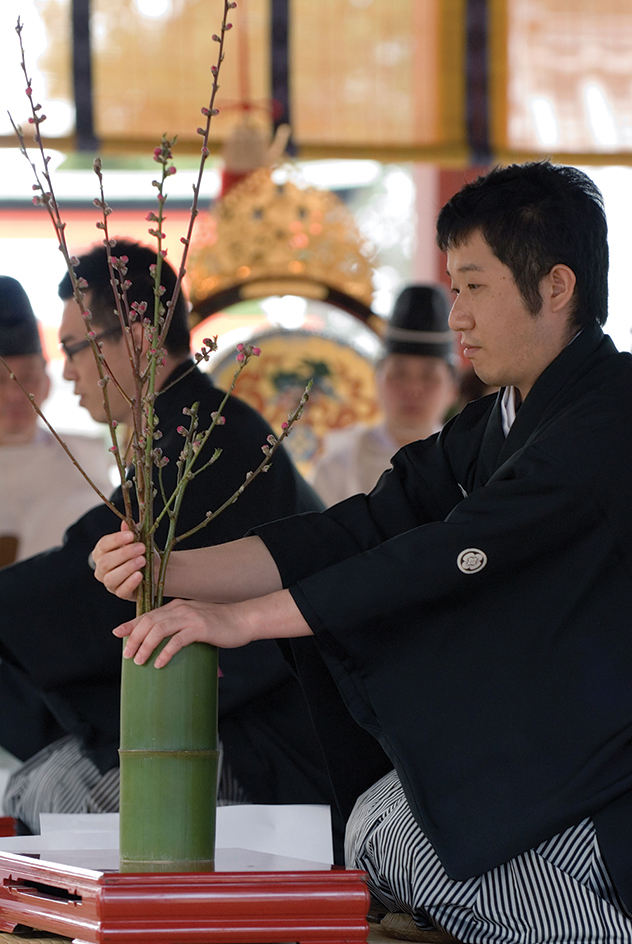
Most flower arrangements are made of fresh flowers. However, you can use dried flowers. You can dry flowers by hanging the blossoms head downward in a dark, dry, well-ventilated room for about three weeks. You can also dry grasses and leaves in this way. Then, you can add them to the flower arrangement.
Flower breeding
has become an increasingly popular hobby among gardeners. Each year, amateur gardeners in many countries produce hundreds of new varieties of flowers. Roses are especially popular for breeding. But many gardeners also work with such flowers as chrysanthemums, irises, orchids, and water lilies. Most new varieties introduce changes in the color, fragrance, shape, or size of the blossoms. Flower breeding has also produced such improvements as greater hardiness and greater resistance to diseases and insects.
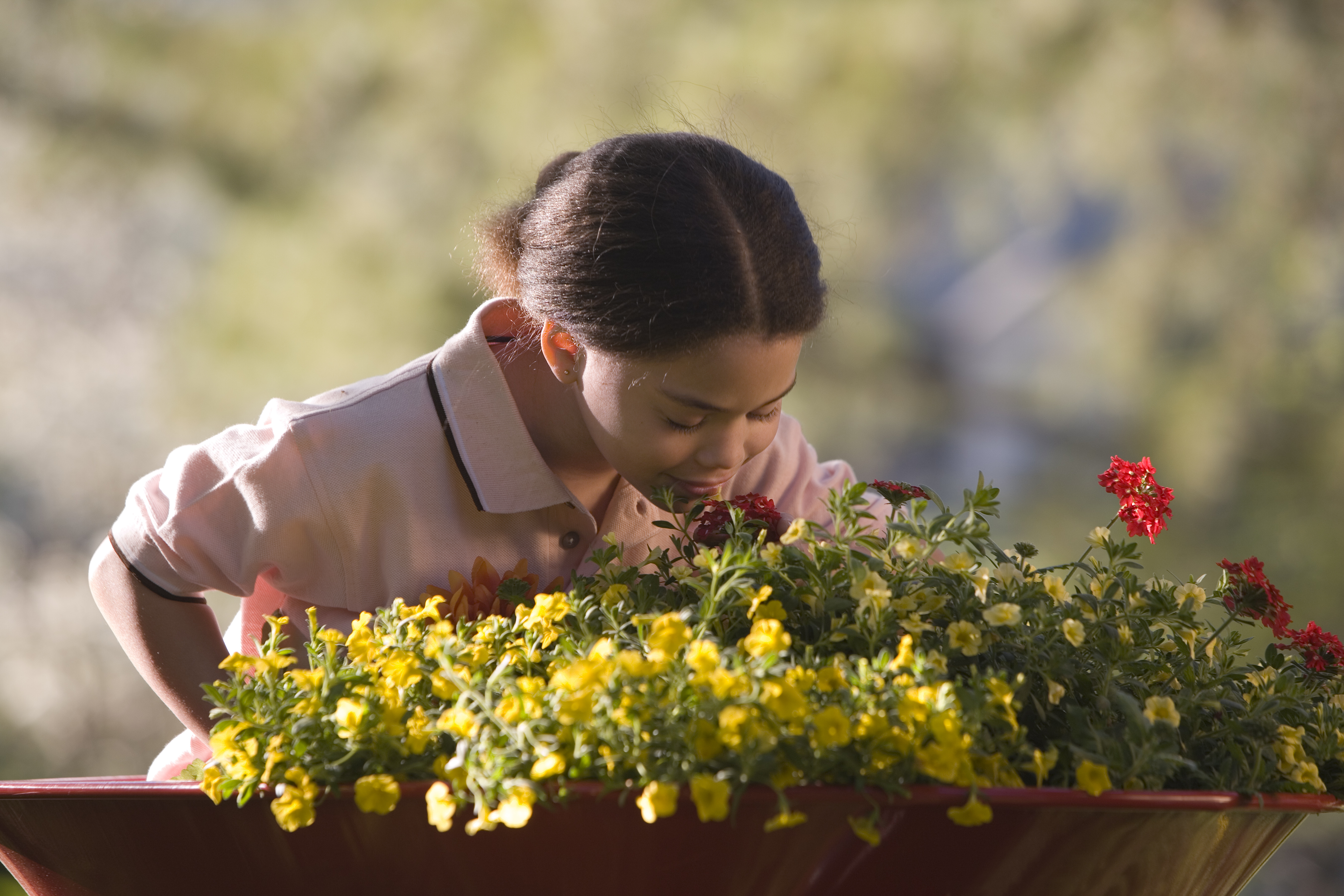
Gardeners typically breed flowers by crossing two related species or two varieties of the same species. Each parent is selected for a desired characteristic, such as the color or size of its blossoms. The breeder takes pollen from one parent and places it on a stigma of the other parent. Some of the resulting offspring may have the desired characteristics of both parents. Such offspring are called hybrids. By repeating experiments with many parents and many varieties, gardeners can produce hybrids of greater vigor and beauty.
How flowers are named and classified
The naming of flowers.
Flowers have both common names and scientific names. Many common names can be traced back hundreds or even thousands of years. The practice of giving plants modern scientific names began during the mid-1700’s.
Common names.
The common names of many wildflowers originated in folklore. In numerous cases, a plant’s name comes from a traditional belief concerning the plant. For example, people believed that agueweed cured a fever called the ague. They believed that colicroot cured abdominal cramps called colic. In other cases, a plant’s common name simply describes a characteristic of the plant. For example, the leaves of pitcher plants form a pitcherlike shape. Skunk cabbages are named for their unpleasant odor.
The common names of many wildflowers end in -wort, such as birthwort, liverwort, milkwort, ragwort, and soapwort. The ending -wort comes from the Old English word wyrt, meaning root or plant. The first part of each name refers to some special characteristic of the plant, such as its appearance or supposed healing powers. For example, birthworts provided a medicine that was believed to help women during childbirth.
The common names of many poisonous or supposedly poisonous wildflowers end in -bane. These flowers include cowbane, dogbane, and fleabane. The word ending comes from the Old English word bana, meaning murderer. The animal mentioned in each case was supposedly the one most affected by the poison. Some of the plants, including fleabane, are actually harmless.
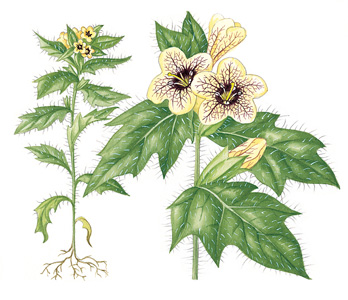
The common names for many garden flowers can be traced back to Latin or ancient Greek. For example, the English name lily comes from the Latin name lilium. Hyacinths are named after Hyacinthus, a youth in Greek mythology famed for his beauty. The names of some garden flowers come from languages other than Latin and Greek. For example, the name tulip comes from the Turkish word tülbent, meaning turban. Some tulips are shaped somewhat like turbans. People brought tulips to Europe from Turkey.
A number of flowers have been named after people. For example, begonias were named in honor of Michel Begon, a governor of French Canada and an amateur botanist.
Scientific names.
The common names of flowers are not suitable for scientific purposes. In many cases, the same flower has more than one common name. For example, in the United States, a marsh marigold is also called a cowslip, kingcup, and May blob. In other cases, people use the same name for entirely different flowers. For example, several different species of flowers are called bluebells in various English-speaking countries. To avoid confusion, botanists thus refer to each species of flower by its scientific name.
A scientific name consists of a two-part Latin name, called a binomial. The first part of the binomial refers to the genus (group of species) to which the species belongs. The second part of the name is called the specific epithet. For example, the flower known as a cowslip, kingcup, marsh marigold, or May blob has the scientific name Caltha palustris. The genus name, Caltha, is the Latin word for marsh marigold. The second part of the name, palustris, is a Latin word meaning marsh loving. No other species of plant in the world is named Caltha palustris. By using scientific names, botanists can identify every species of plant precisely.
The classifying of flowers.
Flowering plants make up a division (major group) of plants called Anthophyta. This division is split up into two major classes: (1) eudicotyledons, also called eudicots, and (2) monocotyledons, also known as monocots. The pollen of eudicots has a structure distinct from that of other flowering plants. Also, the seeds of eudicots and other flowering plants have two tiny leaves called cotyledons. The seeds of monocots have only one cotyledon. The petals and other flower parts of most monocots usually grow in threes or in multiples of three, and the veins in their leaves usually parallel one another. The flower parts of eudicots typically grow in fours or fives or in multiples of four or five, and the veins in their leaves are usually branched rather than parallel. There are many more species of eudicots than monocots. A small number of flowering plants, including magnolias and water lilies, also have two cotyledons, but they are not eudicots. They are placed in separate, smaller classes.
Each class of flowering plants is divided into orders, each order into families, and each family into genera (the plural of genus). A table in this article lists families that include many familiar garden flowers and wildflowers. The table gives (1) typical characteristics of most flowers in the family; and (2) the common names of representative flowers.
The evolution of flowering plants
Flowering plants make up the vast majority of plant species today. But angiosperms appeared relatively recently in the history of plant life. Plants first colonized the land more than 430 million years ago. The oldest known angiosperm fossils are only about 130 million years old.
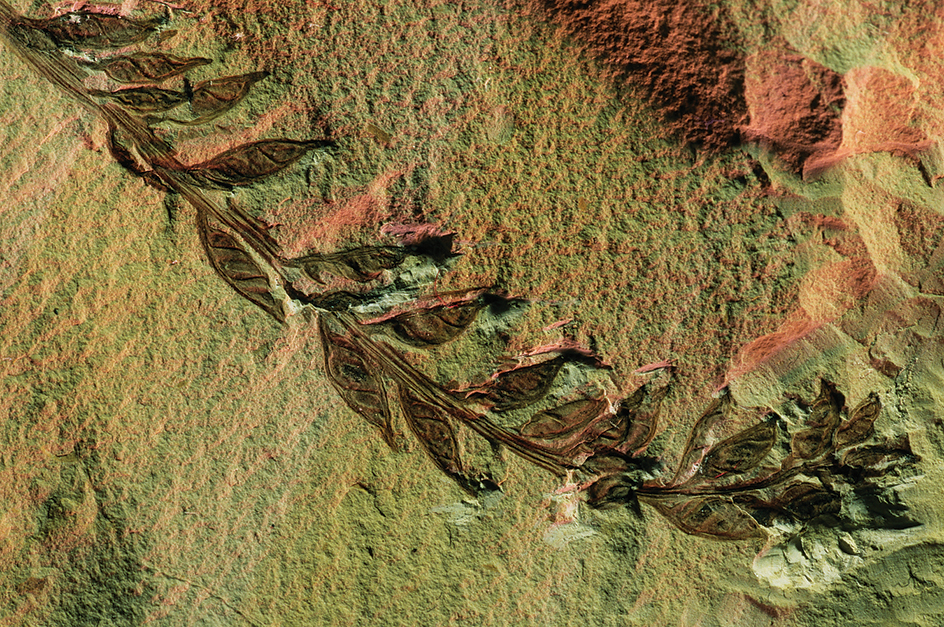
A number of unique traits distinguish angiosperms. These include the development of flowers and fruits. Scientists disagree on when exactly the first plant with all the characteristic traits of angiosperms appeared. Experts also debate which nonflowering seed plants gave rise to the first angiosperms.
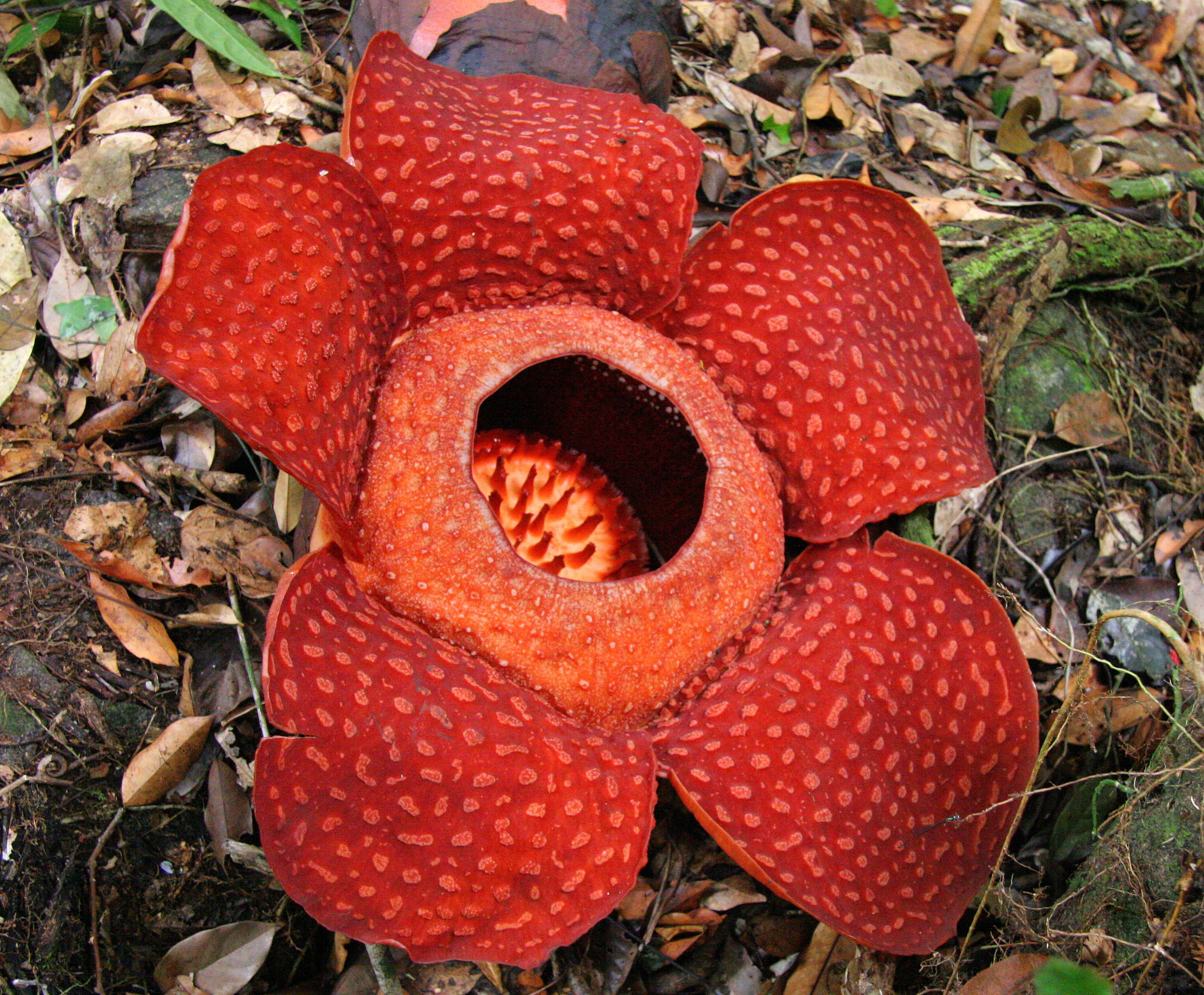
Angiosperms developed during the time of the dinosaurs. Prior to the appearance of the angiosperms, gymnosperms were the only seed plants. Among the most abundant plants were early forms of such trees as conifers, cycads, and ginkgoes.
One of the earliest examples of a fossil angiosperm is Archaefructus. It lived in China about 125 million years ago. Archaefructus probably grew in shallow water, with its flowers extending above the water’s surface. Its flowers lacked the showy petals seen in many modern flowering plants.
Angiosperms became much more diverse soon after they first appeared. Early angiosperm groups included the water lilies and the magnolias. By about 120 million years ago, monocots and eudicots had both developed. By the end of the Cretaceous Period about 65 million years ago, angiosperms had begun to replace gymnosperms as the most common seed plants.
Angiosperms had a number of characteristics that enabled them to compete successfully against other plants. For example, most gymnosperms rely on the wind for pollination. Many angiosperms developed adaptations, such as showy flowers and nectar, to encourage pollination by insects and other animals. Pollination by animals is more successful than wind pollination in many environments. In addition, angiosperms develop seeds more rapidly after fertilization than do gymnosperms. This rapid seed development enables angiosperms to colonize open areas more quickly. Angiosperms also are the only plants that develop fruit. Animals that eat fruit often pass the seeds in their waste, leaving the seeds unharmed. In this way, animals carry angiosperm seeds far from the parent plants. By contrast, most gymnosperms rely on wind to disperse their seeds. The wind seldom carries seeds far.
The evolution of flowering plants made possible the appearance of thousands of new species. For example, the advent of pollination encouraged tremendous diversity among insects, which specialized to visit particular angiosperm species. Many new species of bees, beetles, butterflies, and other insect pollinators evolved in this way. At the same time, flowering plants became more diverse, as species developed adaptations to attract particular pollinators. This relationship—in which the evolution of one species drives the evolution of another and vice versa—is called coevolution.
The development of fruits also led to coevolution. The dinosaurs became extinct about 65 million years ago. At that time, many new species of birds and mammals appeared. These new species consumed the fruits of angiosperms. Angiosperms became more diverse as they developed fruits to appeal to particular animal species.
Great forests of angiosperms came to cover much of Earth during the Cenozoic Era, which began about 65 million years ago and continues today. Angiosperm trees were slower to spread to areas with cold climates and high elevations. In these areas, conifers and other gymnosperms remain common. At the beginning of the Pleistocene Epoch, about 2.6 million years ago, Earth became colder and drier. At this time, large areas of forest were replaced by angiosperm herbs, including grasses.
